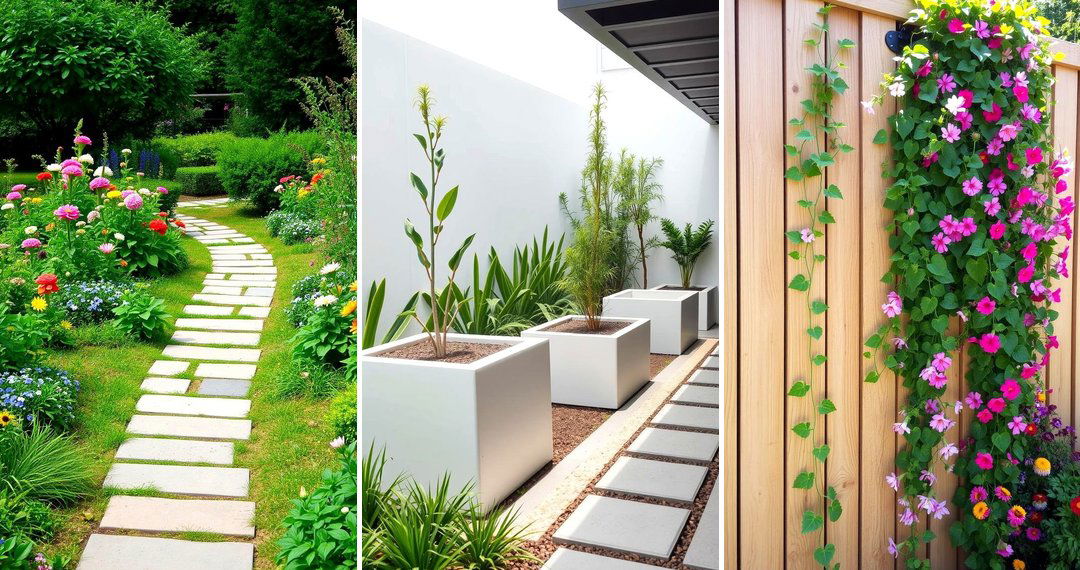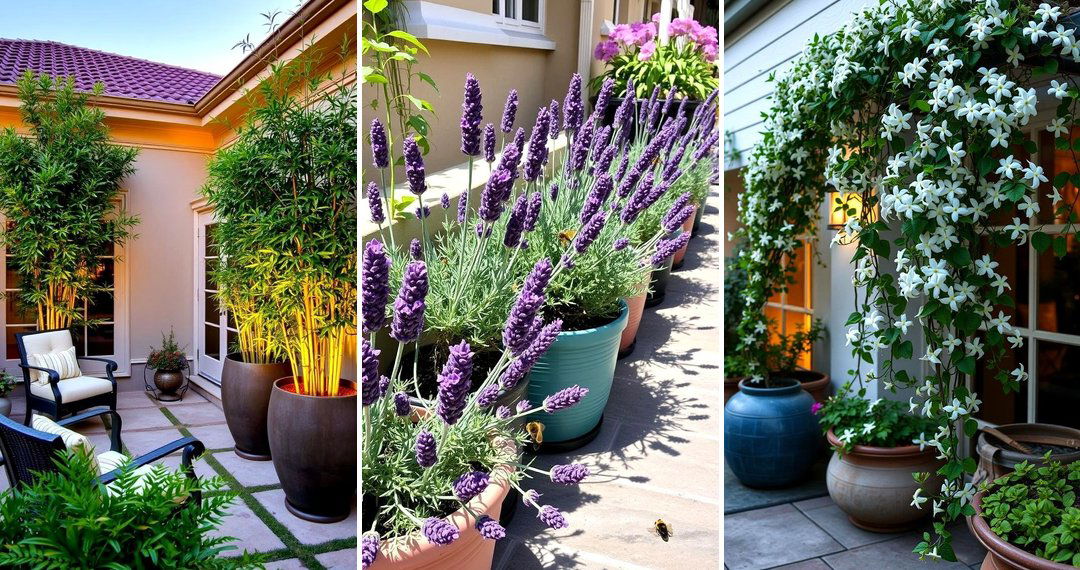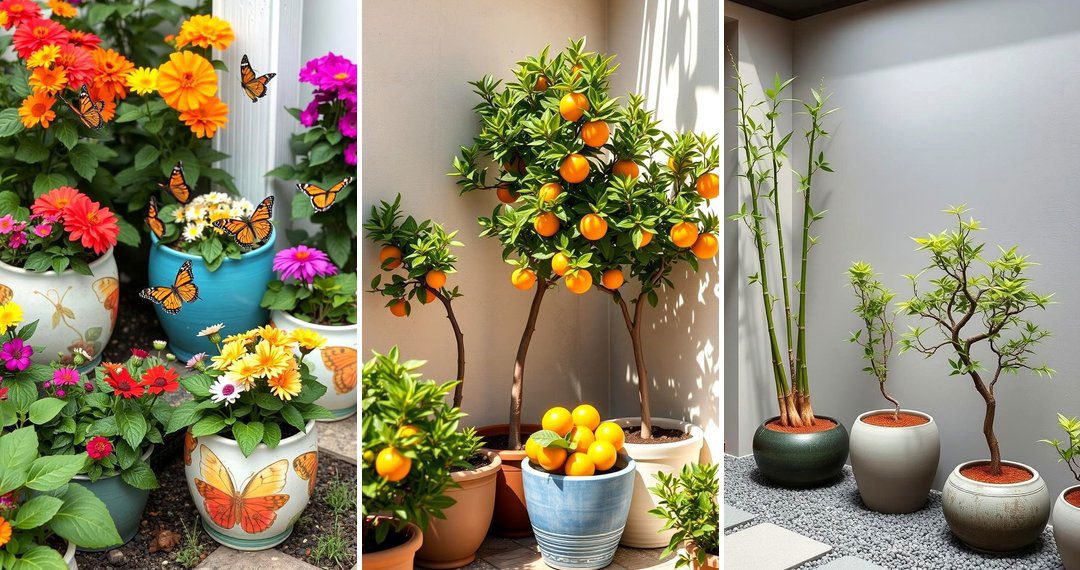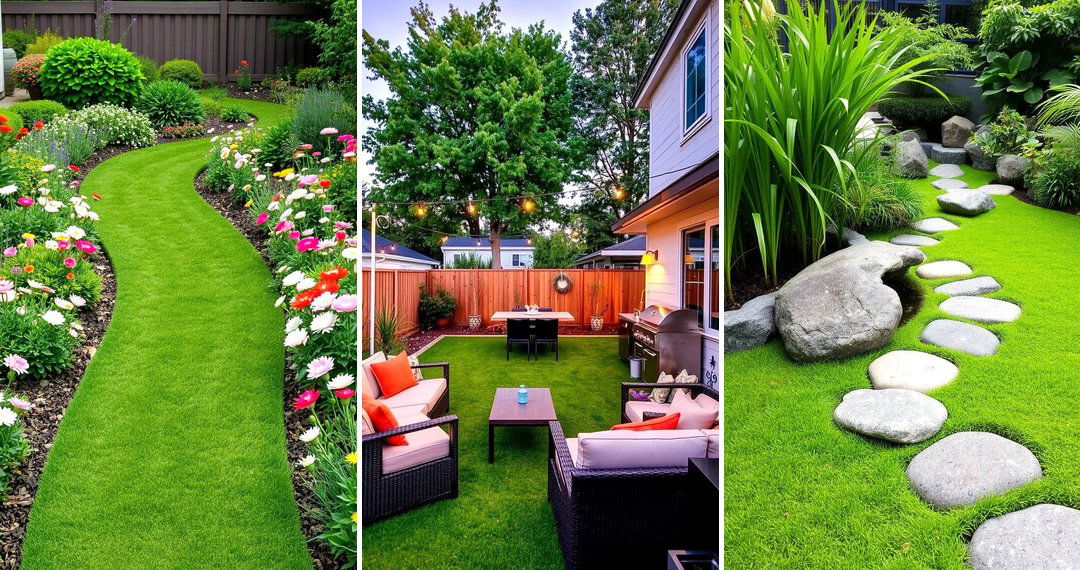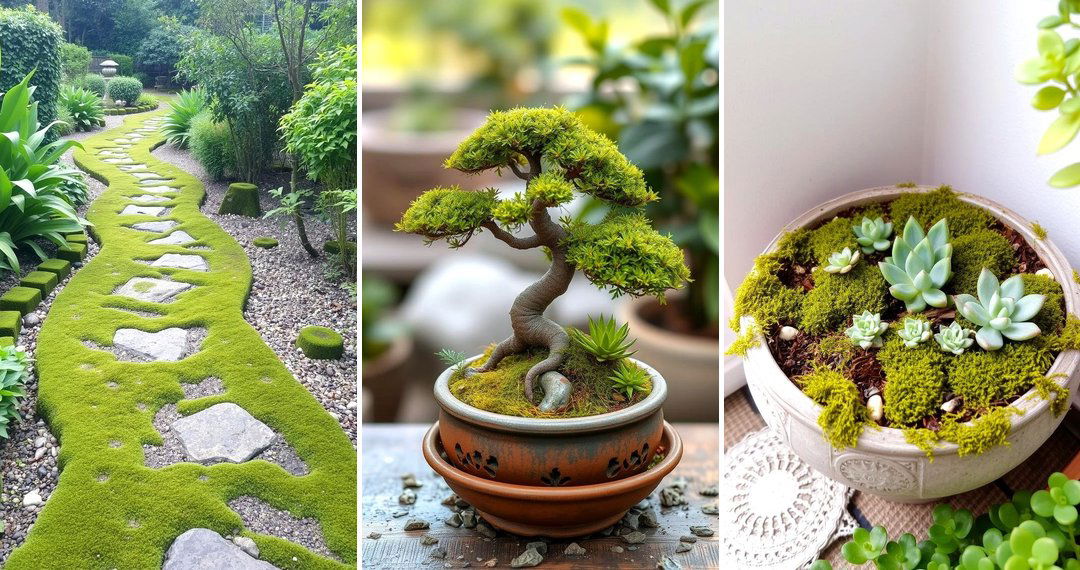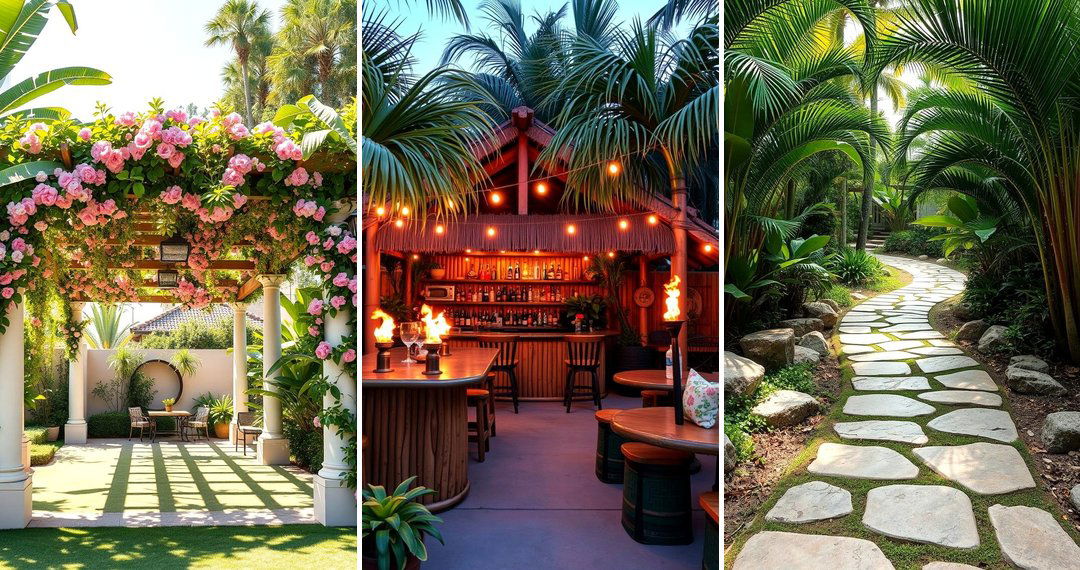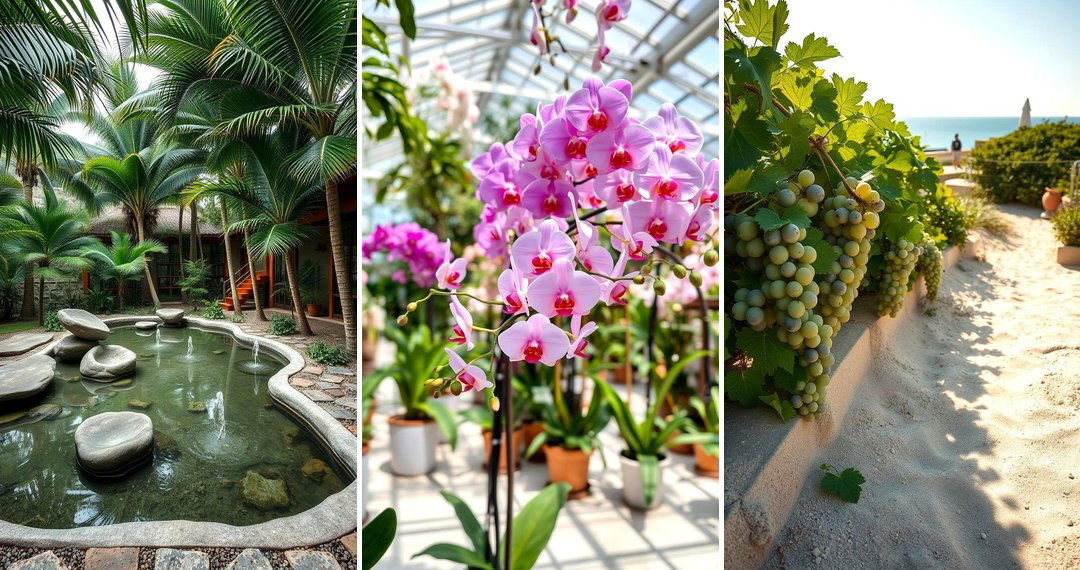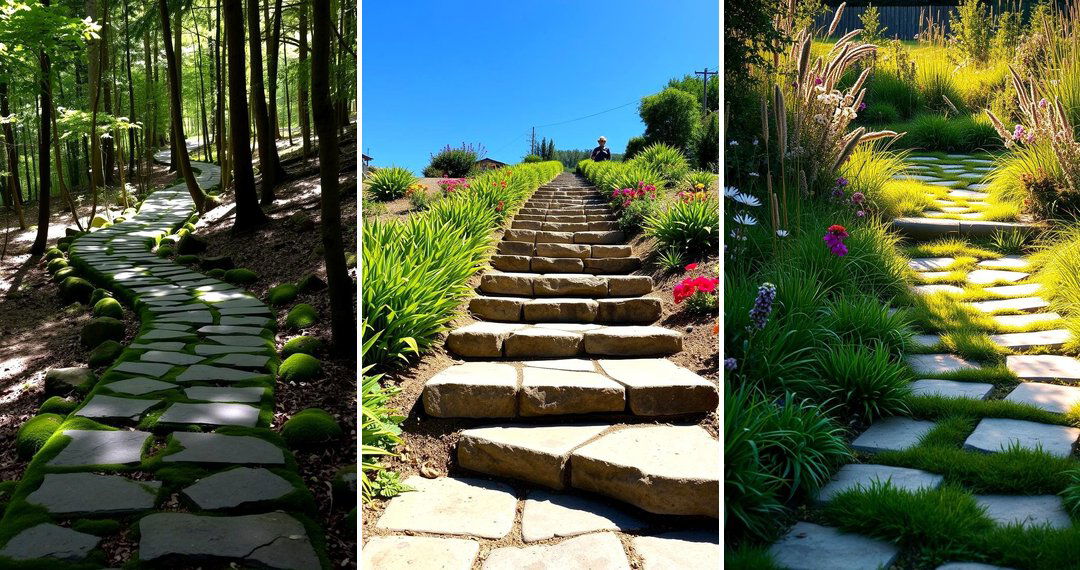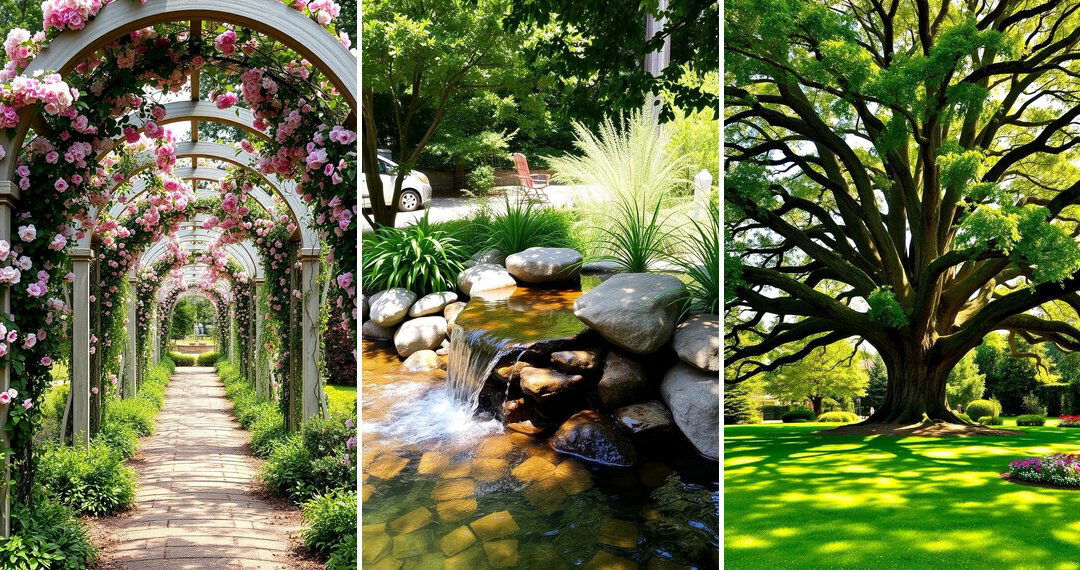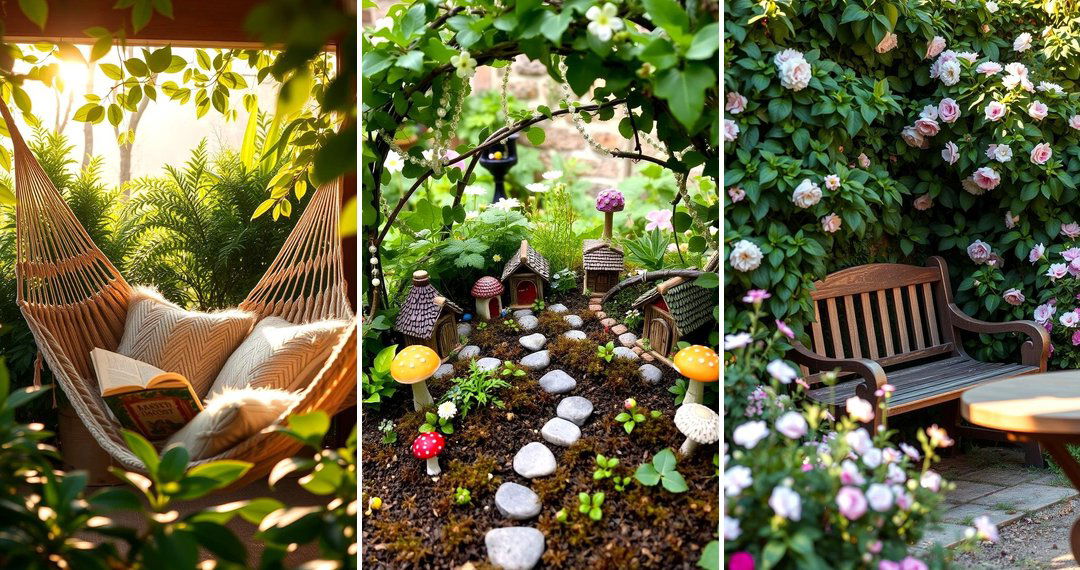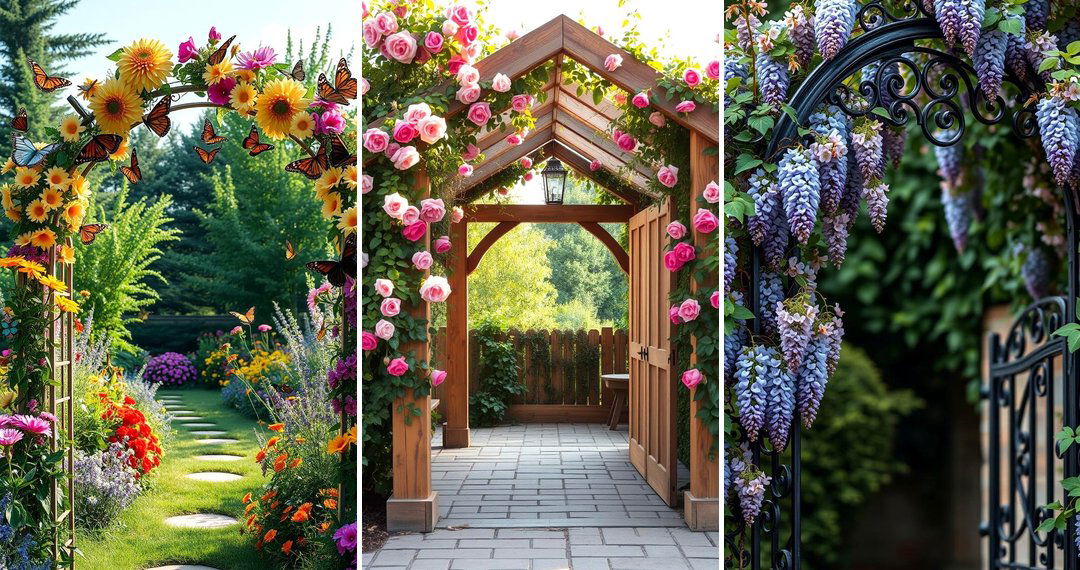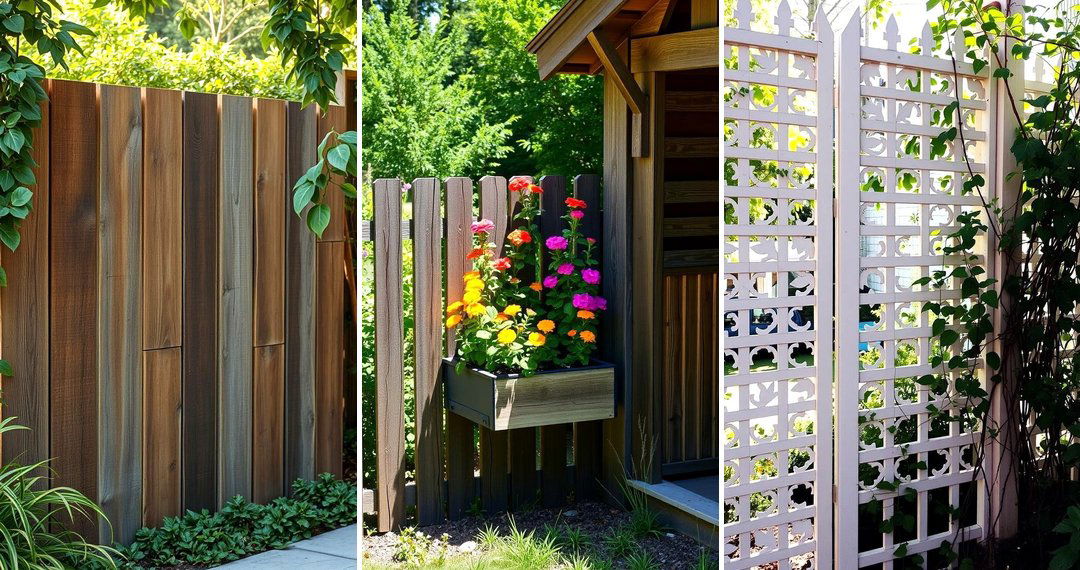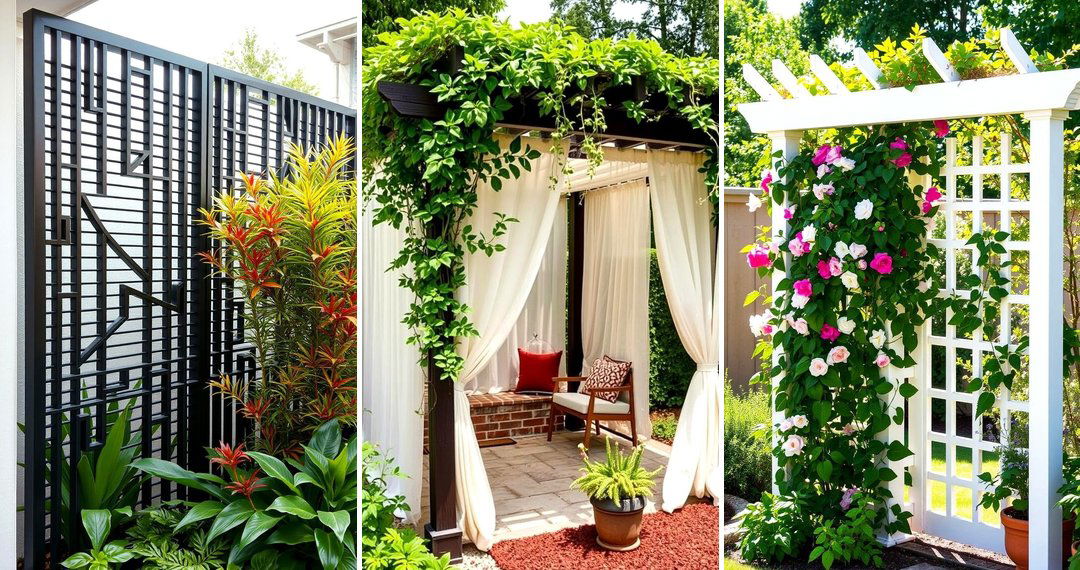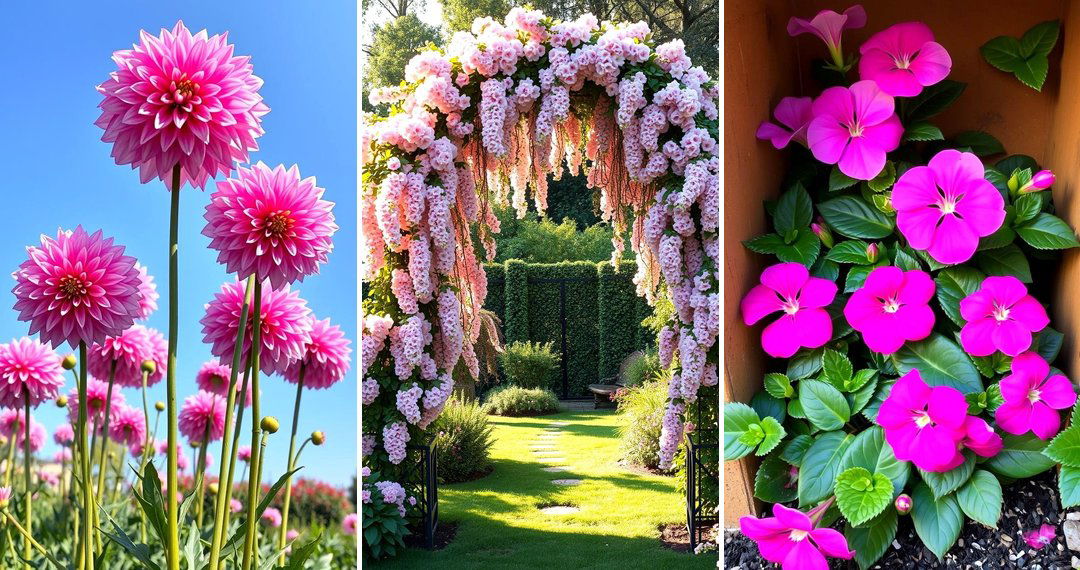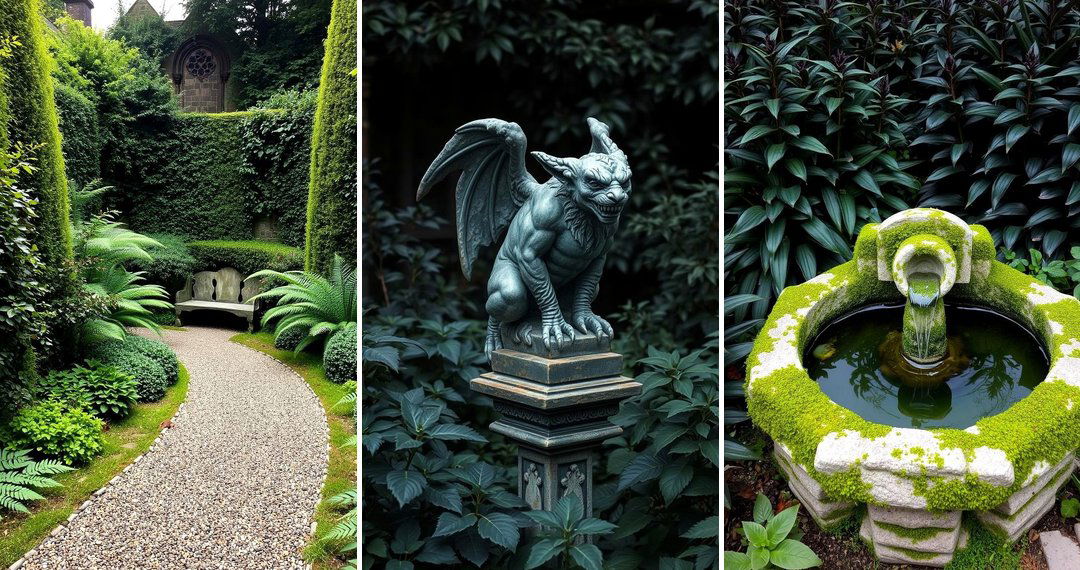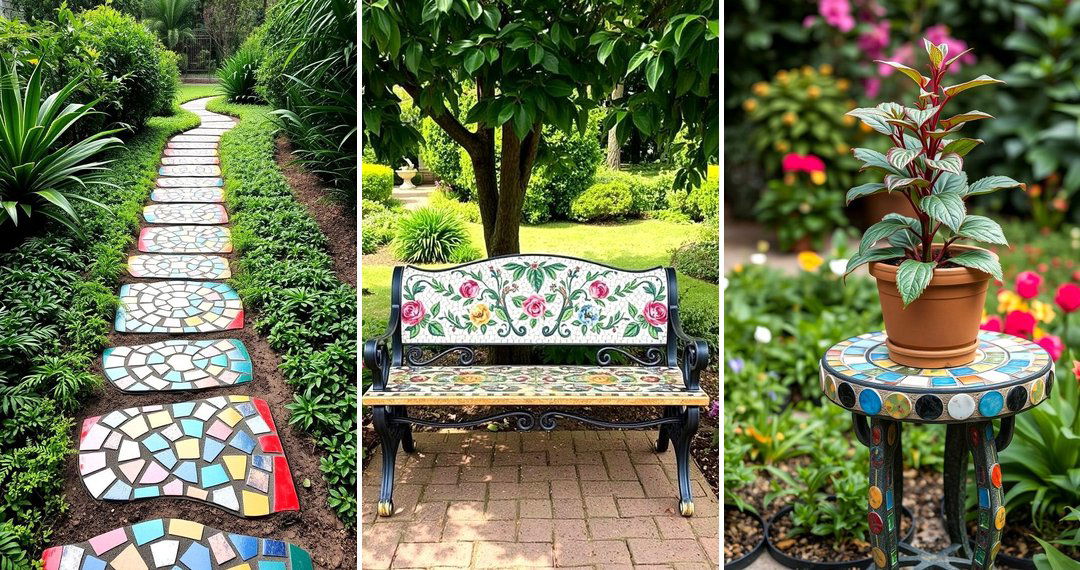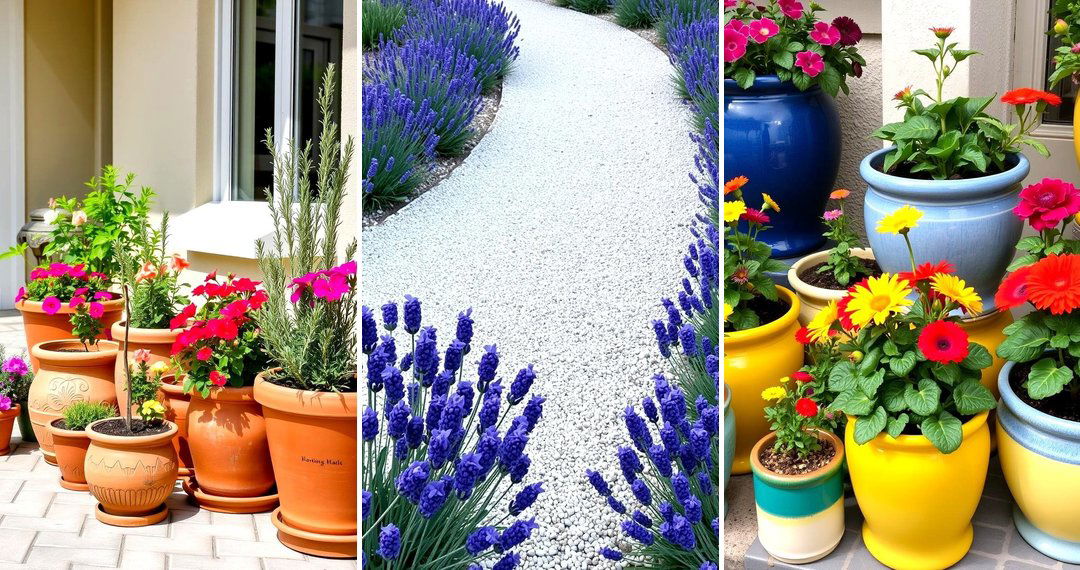Embrace the cool tranquility of a shade garden, a verdant sanctuary where sunlight takes a gentle pause. Often perceived as a challenge, shaded areas present a unique canvas for creativity and the cultivation of lush, diverse plant life. Discover how to transform these often-overlooked spaces into captivating retreats, bursting with texture, color, and a sense of serene beauty. These havens offer respite from the harsh glare of the sun, providing an ideal environment for a myriad of plants that thrive in softer light. Ready to unlock the full potential of your property's dimmer corners? Let's explore some inspiring 24 Shade Garden Design Ideas.
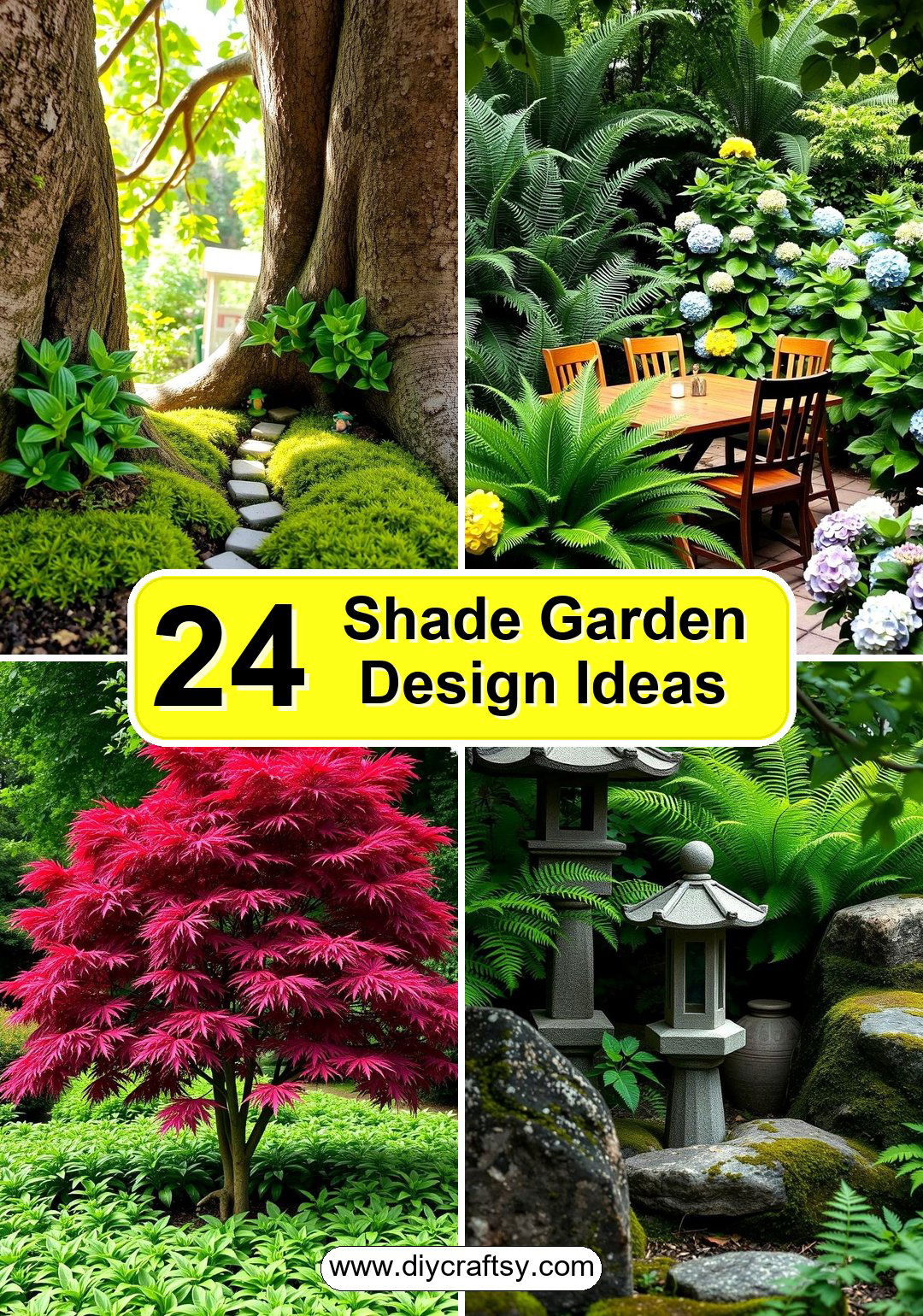
1. Hostas and Fern Paradise
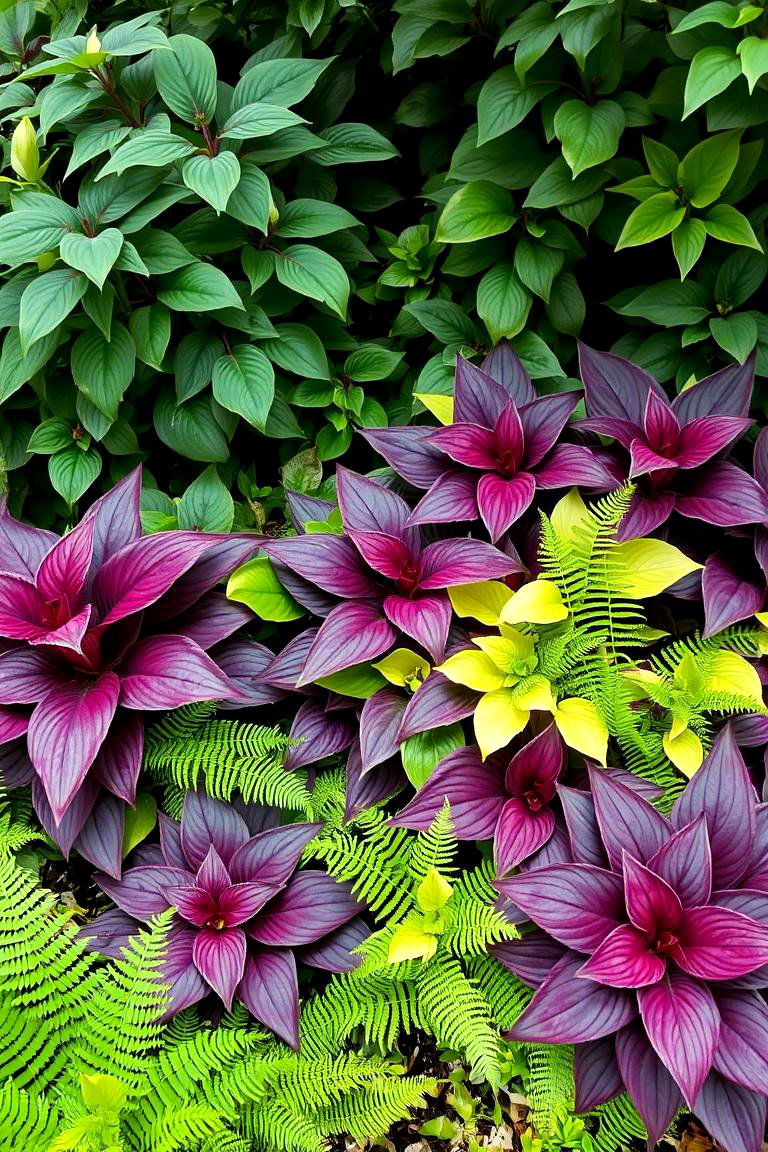
For those seeking a classic and elegant shade garden, consider the timeless pairing of hostas and ferns. These foliage favorites offer a stunning array of textures and shades of green, creating a calming and sophisticated atmosphere. Hostas, with their broad leaves in various sizes, colors, and variegations, provide a wonderful backdrop for the delicate fronds of ferns, which add an airy and graceful touch. Beyond their visual appeal, both plants are relatively low-maintenance and thrive in moist, shady conditions, making them a practical and beautiful choice for any gardener looking to enhance their shaded spaces.
2. Woodland Path with Stepping Stones
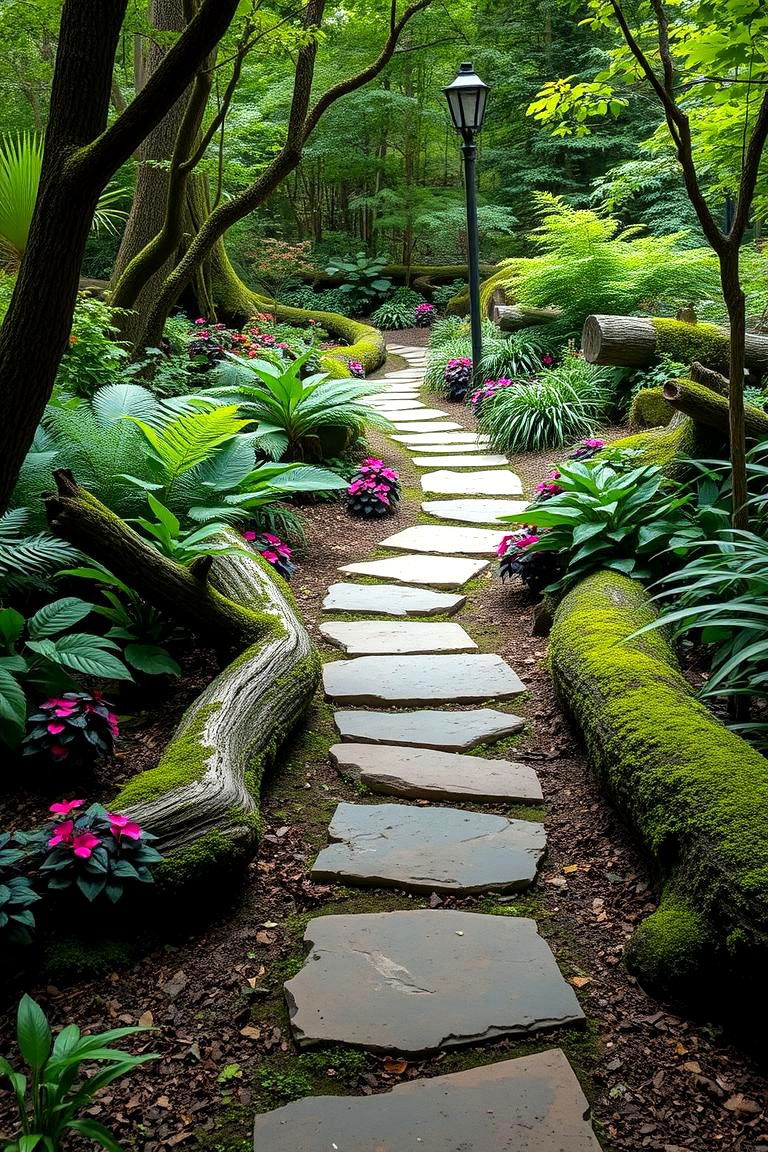
Imagine a meandering path winding through a lush, shady woodland garden. This design idea focuses on creating a sense of exploration and natural beauty. With carefully placed stepping stones, you can invite visitors to stroll through a tapestry of shade-loving plants, such as impatiens, begonias, and astilbes. By incorporating elements like moss-covered logs and fallen leaves (where appropriate and safe), you can further enhance the woodland feel. The key benefit here is the creation of an enchanting and immersive garden experience right in your own backyard, perfect for quiet contemplation and enjoying nature's tranquility.
3. Shady Corner Bench with Lush Greenery
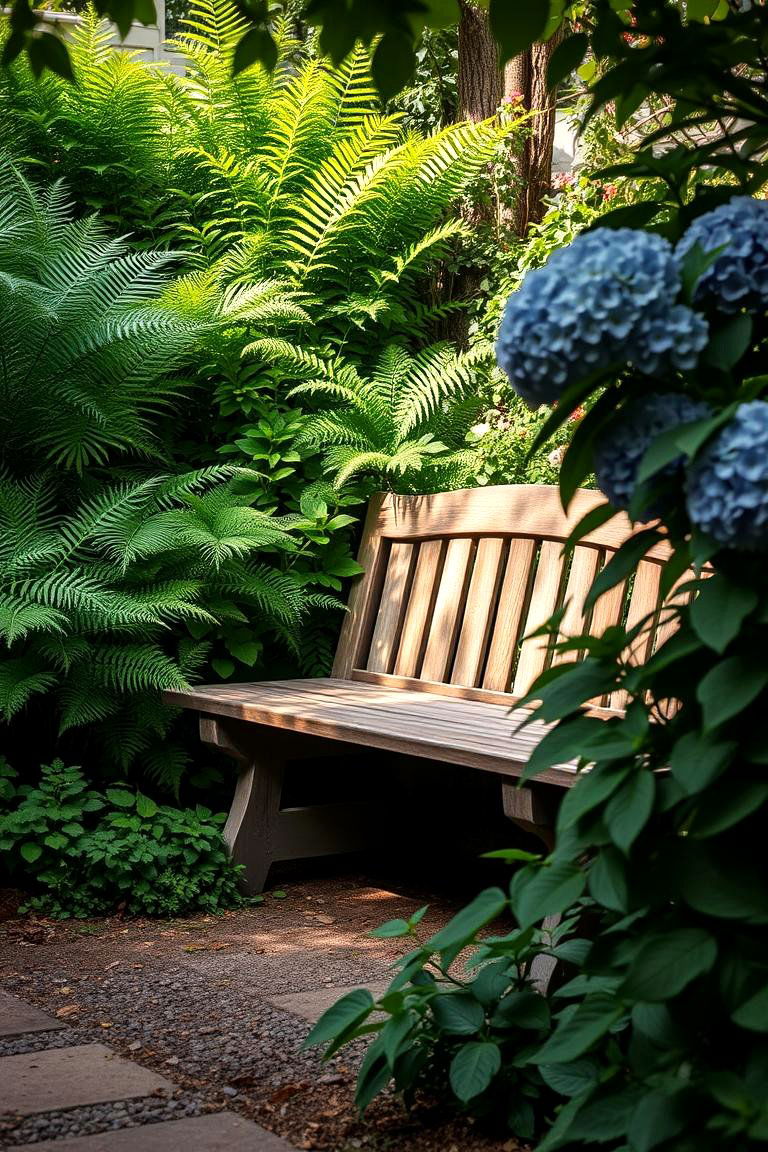
Consider transforming an underutilized shady corner into a cozy and inviting retreat. A simple yet effective design involves placing a comfortable bench amidst a profusion of lush greenery. Plants like ferns, hostas, and hydrangeas thrive in these conditions and can create a sense of enclosure and privacy. Additionally, adding a few shade-tolerant flowering plants, such as forget-me-nots or lily of the valley, can introduce subtle pops of color and fragrance. This design maximizes the use of space while providing a peaceful spot to relax and enjoy the beauty of the shade garden.
4. Vertical Shade Garden on a Wall
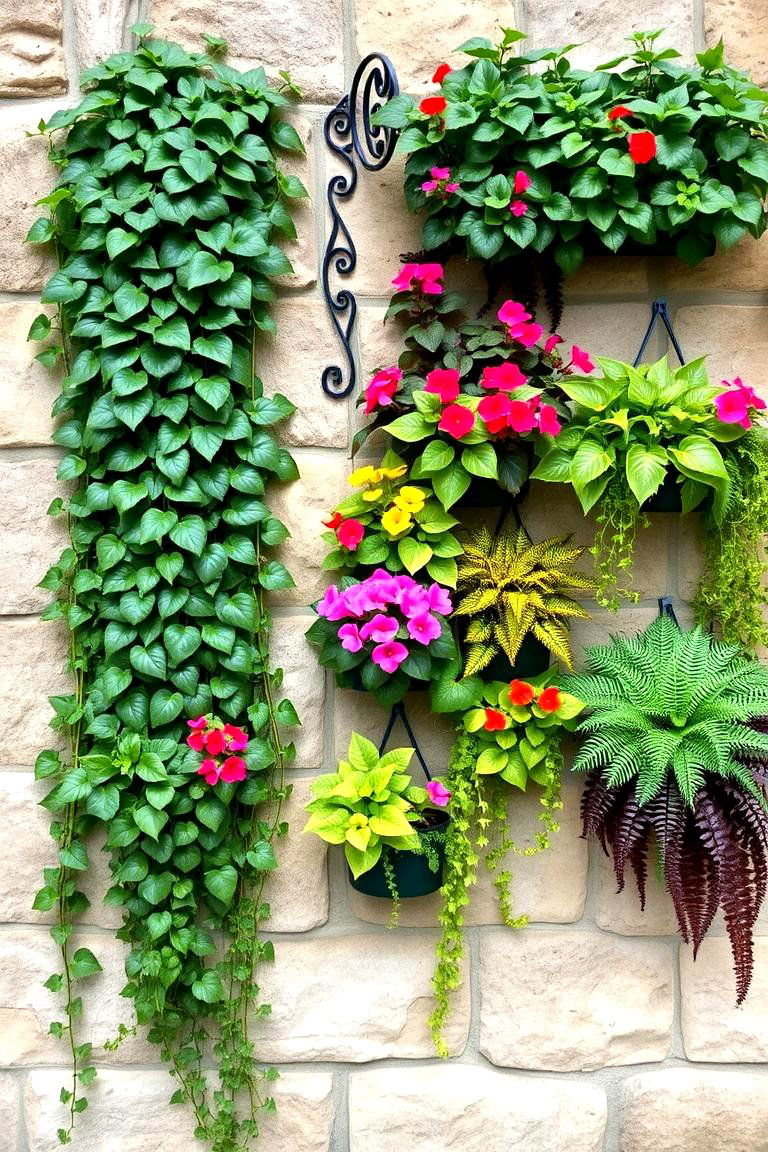
What if you have limited ground space but plenty of shady walls or fences? A vertical shade garden offers a fantastic solution. By utilizing wall-mounted planters or creating a living wall system, you can cultivate a diverse range of shade-loving plants upwards. This not only adds visual interest at different heights but also maximizes the use of vertical space. For instance, you could grow trailing plants like ivy or creeping fig alongside colorful begonias and impatiens. The key benefit is the ability to create a vibrant and space-saving garden even in the smallest of shady areas.
5. Japanese Maple as a Focal Point

The Japanese maple, with its delicate foliage and graceful form, makes an exceptional focal point for a shade garden. These trees come in a variety of colors, from vibrant reds and oranges to deep greens and purples, adding year-round interest. Furthermore, their preference for partial shade makes them ideal for sheltered garden spots. By underplanting with complementary shade-loving perennials like hostas or astilbes, you can create a stunning visual display. The benefit here is the introduction of a striking architectural element that draws the eye and anchors the entire garden design.
6. Flowering Shade Plants for Color Pops
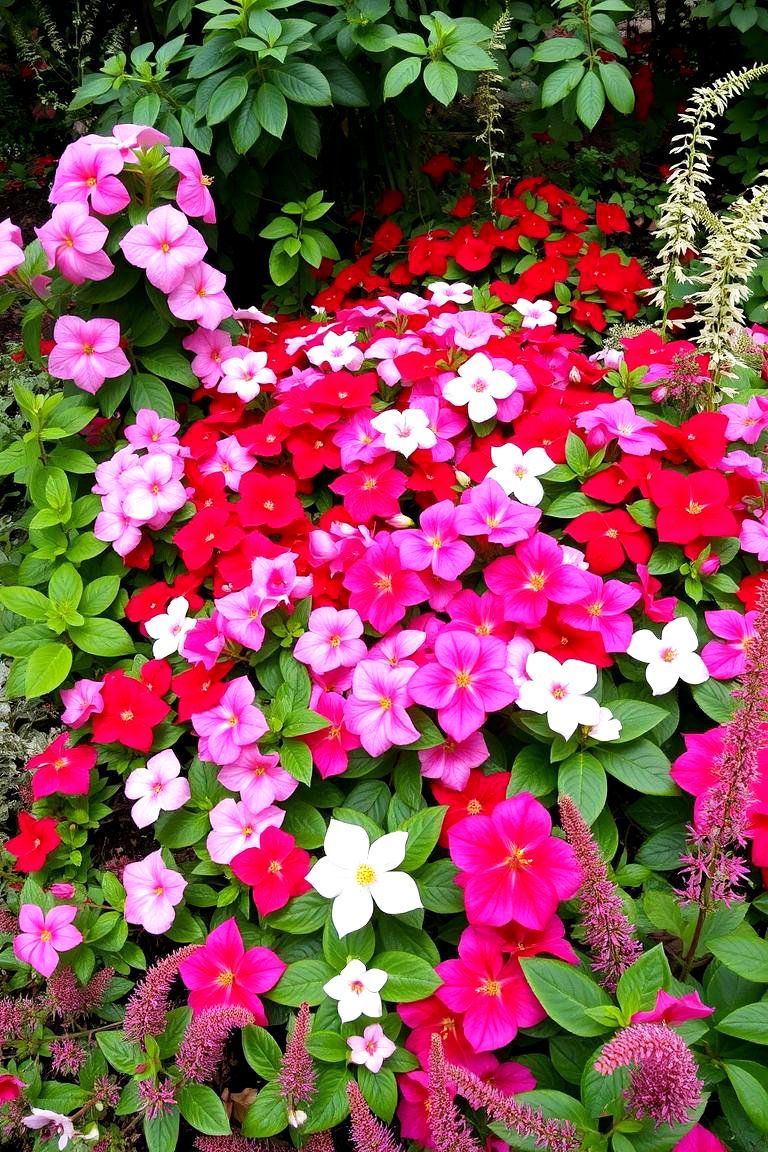
Bringing vibrant color to a shade garden is easily achievable with the right selection of flowering plants. While sunlight might be limited, many beautiful blooms thrive in partial to full shade. For example, impatiens offer a wide spectrum of colors and bloom profusely throughout the season. Similarly, begonias, with their diverse flower shapes and foliage, provide long-lasting color. Adding splashes of color with plants like fuchsias, astilbes, and bleeding hearts can transform a potentially monotonous shady area into a lively and engaging space. The key benefit is the infusion of vibrant hues that brighten up even the darkest corners of your garden.
7. Groundcover Carpet of Pachysandra
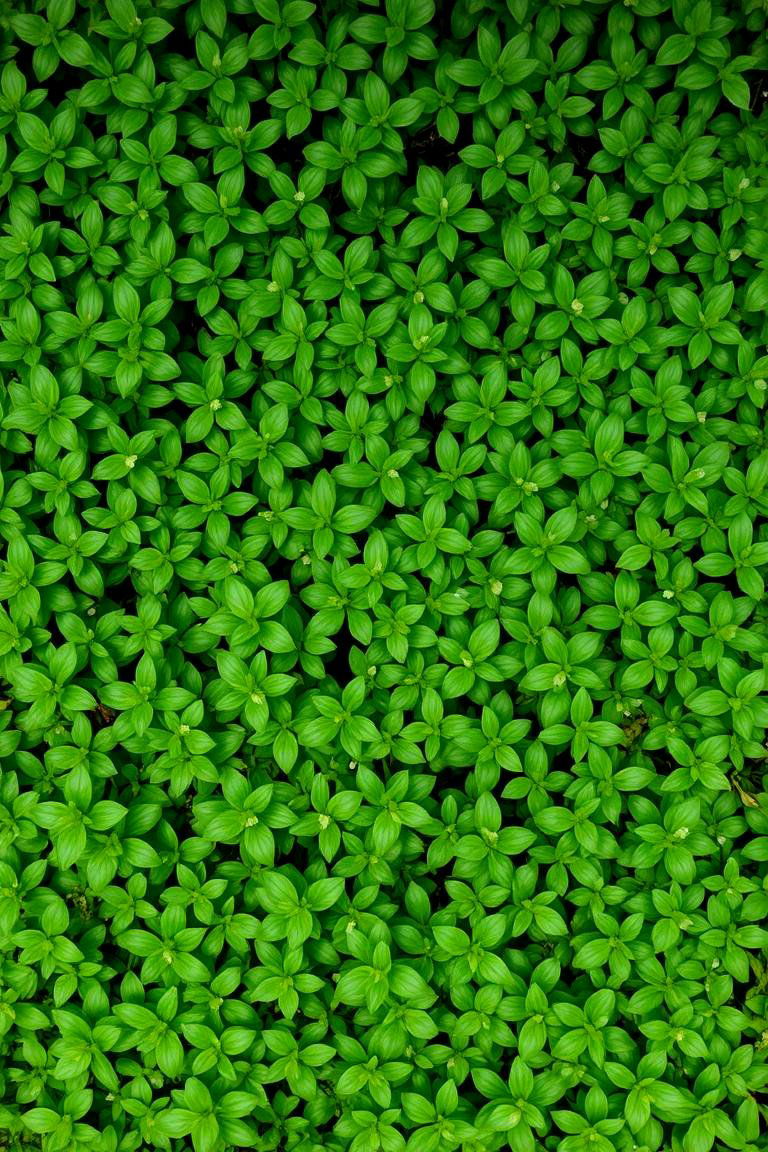
Looking for a low-maintenance way to cover large shady areas? Consider planting a carpet of pachysandra. This evergreen groundcover forms a dense mat of attractive foliage, effectively suppressing weeds and adding a touch of elegance to the garden floor. With its ability to thrive in deep shade and its tolerance for various soil types, pachysandra is a practical and visually appealing choice. Moreover, its subtle, white flowers in the spring add a delicate touch of beauty. The primary benefit is the creation of a uniform and easy-to-care-for groundcover that enhances the overall aesthetic of the shade garden.
8. Water Feature in a Shady Nook
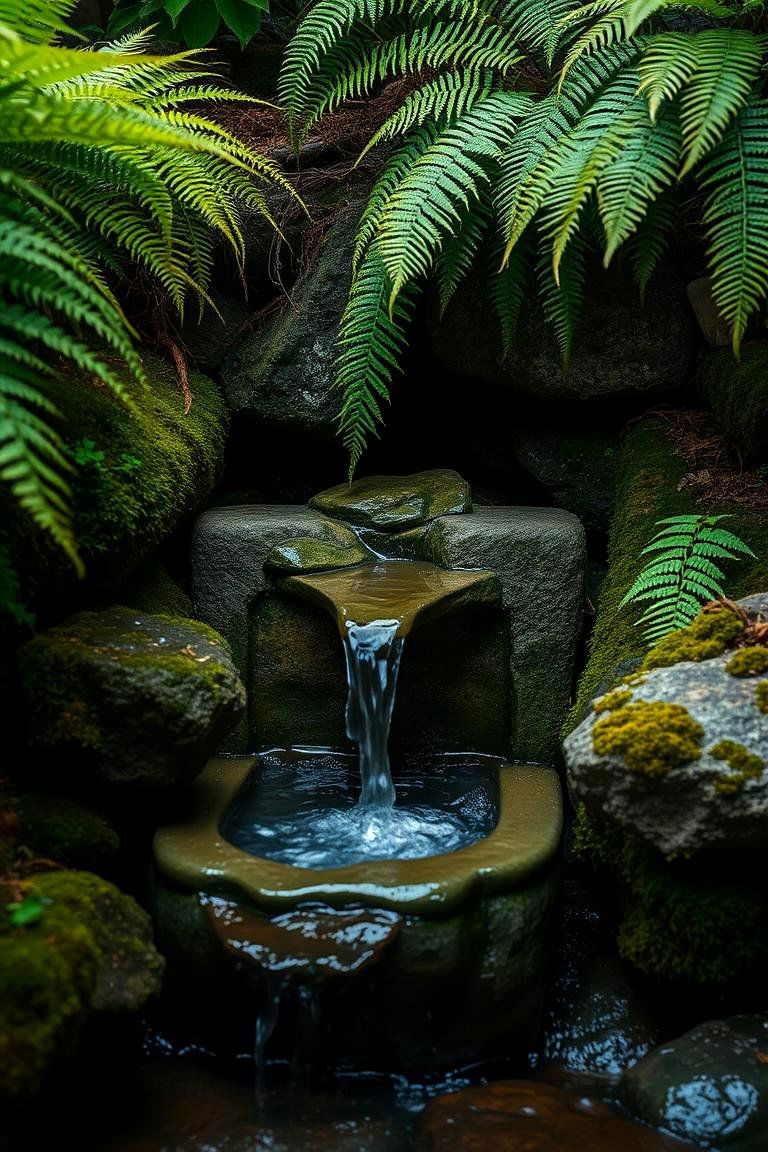
What could be more soothing than the gentle sound of water in a tranquil shade garden? Incorporating a water feature, such as a small fountain or a bubbling rock, can create a serene and relaxing atmosphere. Shady nooks are ideal locations for these features as they often provide a natural backdrop of lush greenery. Furthermore, the moisture from the water can benefit the surrounding shade-loving plants. The key advantage is the introduction of an auditory and visual element that enhances the sensory experience of the garden, making it a true oasis of calm.
9. Rustic Log Edging for Planting Beds
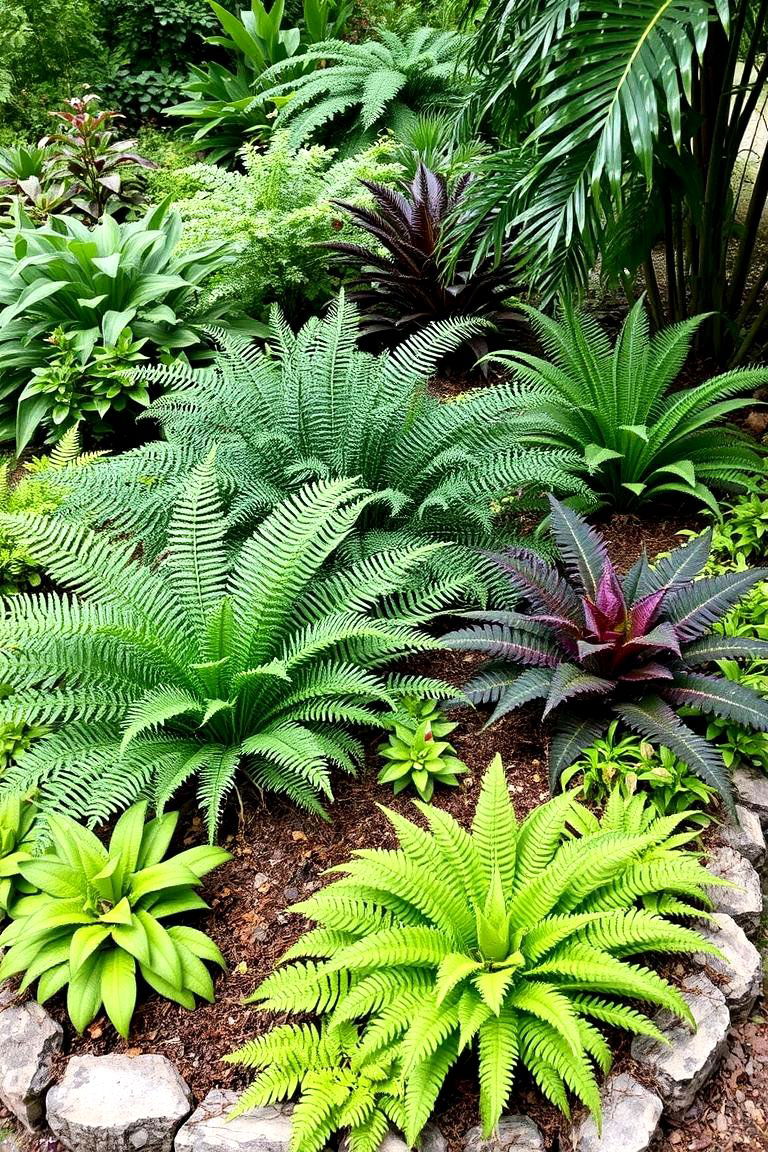
Consider adding a touch of natural charm to your shade garden with rustic log edging. Using reclaimed logs or thick branches to define planting beds creates a visually appealing and informal look that complements the shady environment. This type of edging not only helps to contain soil and mulch but also adds a textural element to the garden design. For instance, you could use the log edging to frame a bed of ferns or hostas. The benefit here is the introduction of a natural and cost-effective way to structure your shade garden while enhancing its rustic appeal.
10. Fairy Garden Under a Tree
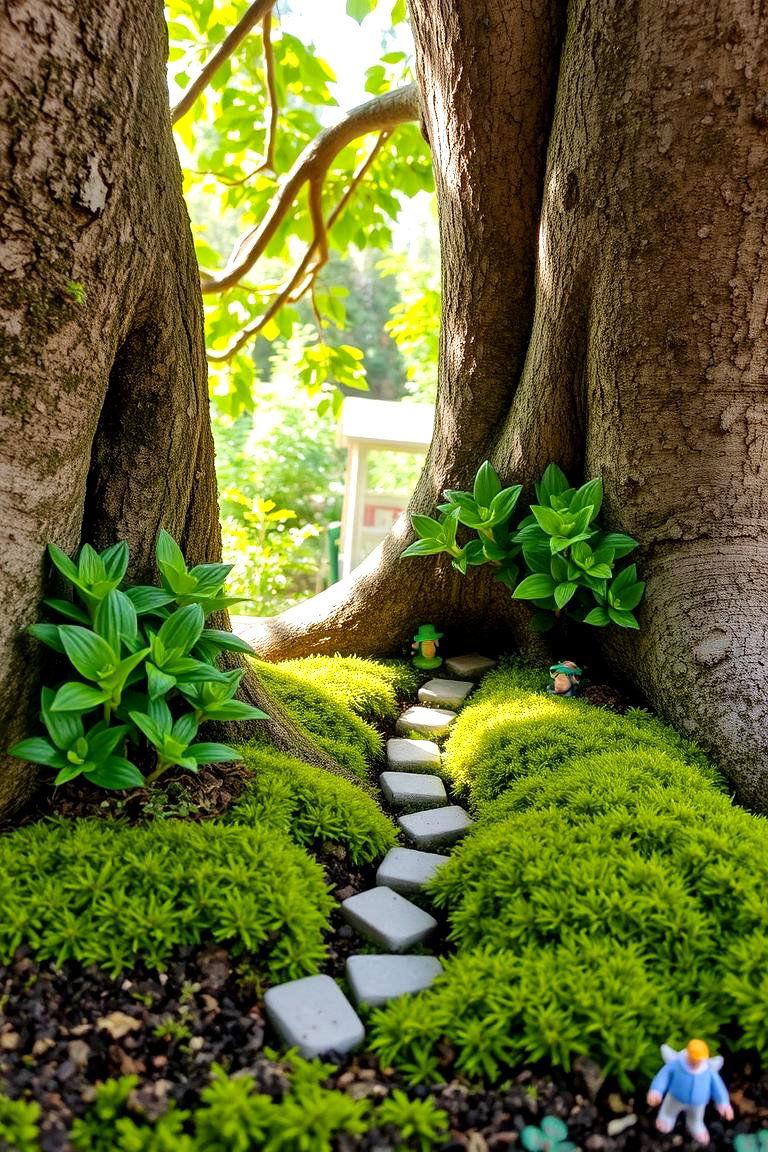
For those with a whimsical spirit, creating a fairy garden in the shade beneath a tree can be a delightful project. This involves setting up miniature landscapes with tiny plants, figurines, and accessories. Shady spots often have a mystical feel that lends itself perfectly to this imaginative concept. You could use small hostas, mosses, and creeping thyme as the "trees" and "groundcover" in your miniature world. The key benefit is the creation of an enchanting and engaging space that sparks creativity and brings a touch of magic to the shade garden.
11. Outdoor Reading Nook in the Shade
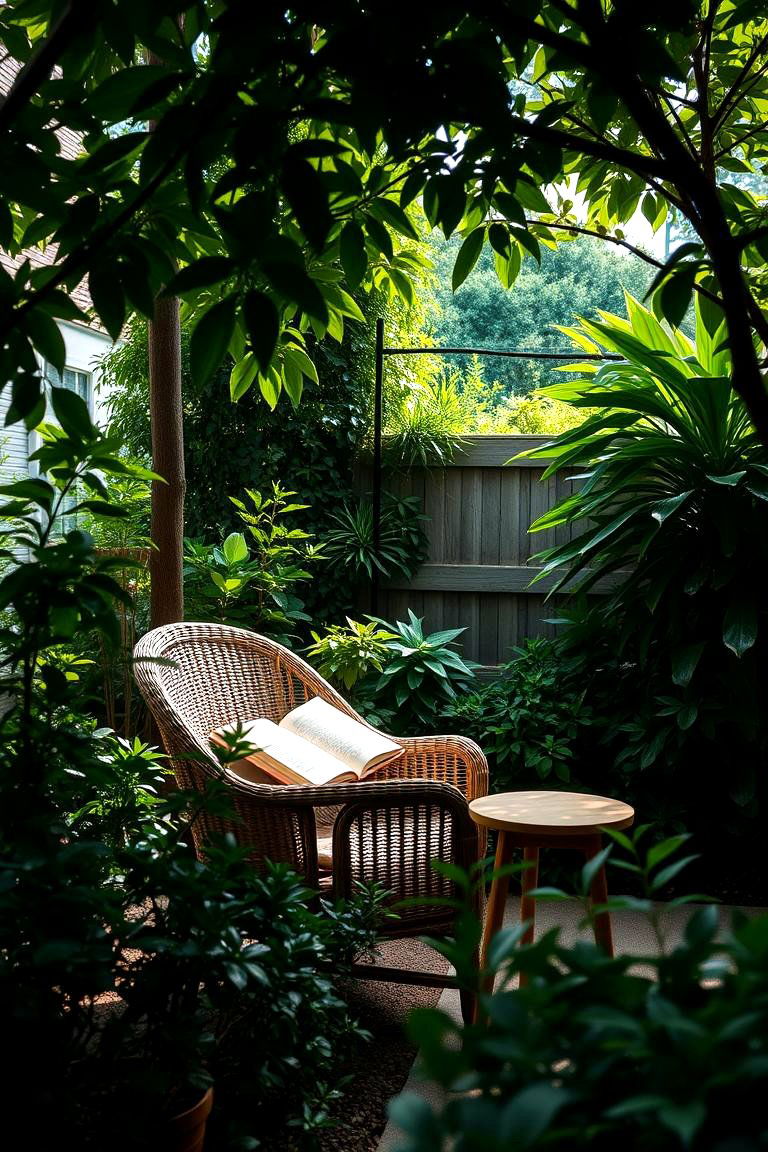
Imagine curling up with a good book in a cool and comfortable outdoor reading nook. A shady spot in the garden provides the perfect environment for this. By placing a comfortable chair or a small bench amongst shade-loving plants, you can create a peaceful and private retreat. Adding a small side table for a drink or a lamp for evening reading can further enhance the functionality and comfort of this space. The primary benefit is the creation of a dedicated area for relaxation and enjoyment of the outdoors, shielded from the sun's harsh rays.
12. Container Garden for Shady Balcony
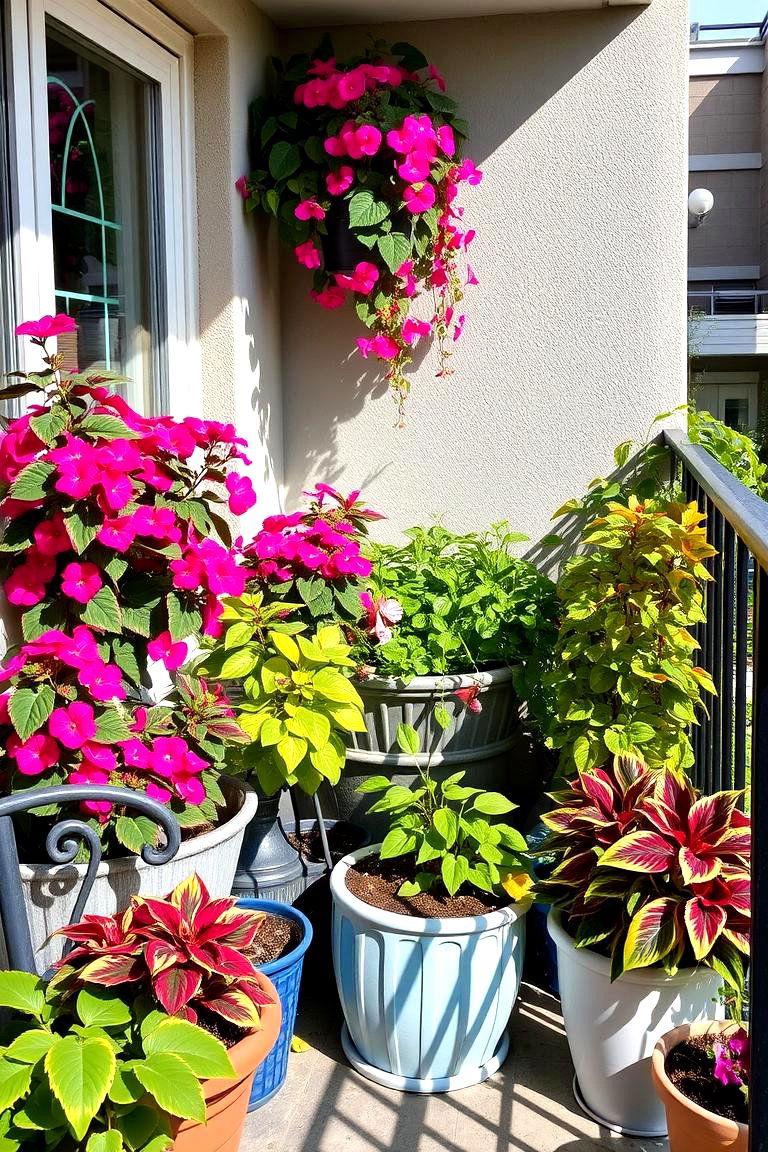
If you have a shady balcony or patio, container gardening offers a versatile way to bring life and color to the space. Choose a variety of shade-tolerant plants like impatiens, begonias, fuchsias, and coleus, and arrange them in attractive pots and containers. Consider using different sizes and heights to create visual interest. Furthermore, containers allow for easy rearrangement and the flexibility to change your garden design as desired. The key benefit is the ability to create a vibrant and personalized garden in a limited shady space, bringing nature right to your doorstep.
13. Bird Bath Surrounded by Shade Lovers
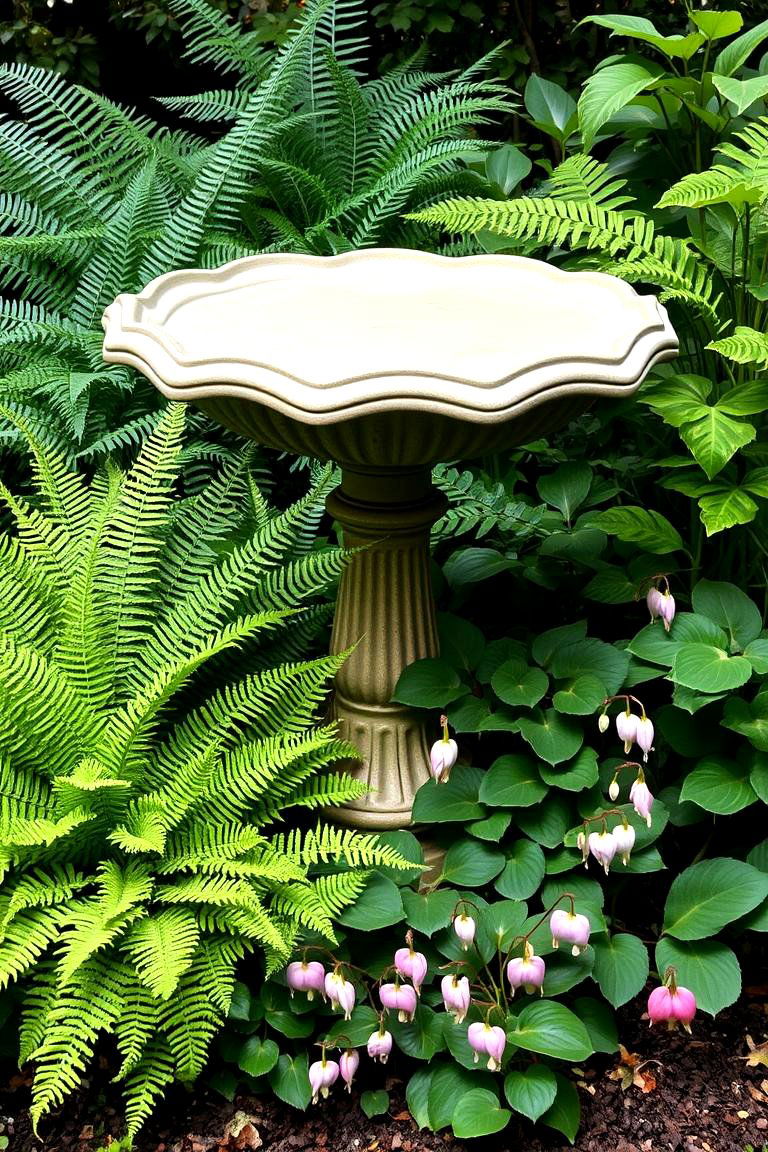
Attract feathered friends to your shade garden by incorporating a bird bath. The gentle shade provides a cool and safe haven for birds to drink and bathe. Surround the bird bath with lush, shade-loving plants like ferns, hostas, and bleeding hearts to create a natural and inviting setting. The presence of birds adds life and movement to the garden, enhancing its charm and ecological value. The main benefit is the creation of a welcoming environment for local wildlife, bringing the sights and sounds of nature closer to home.
14. Mulch Pathways Through Shade Garden
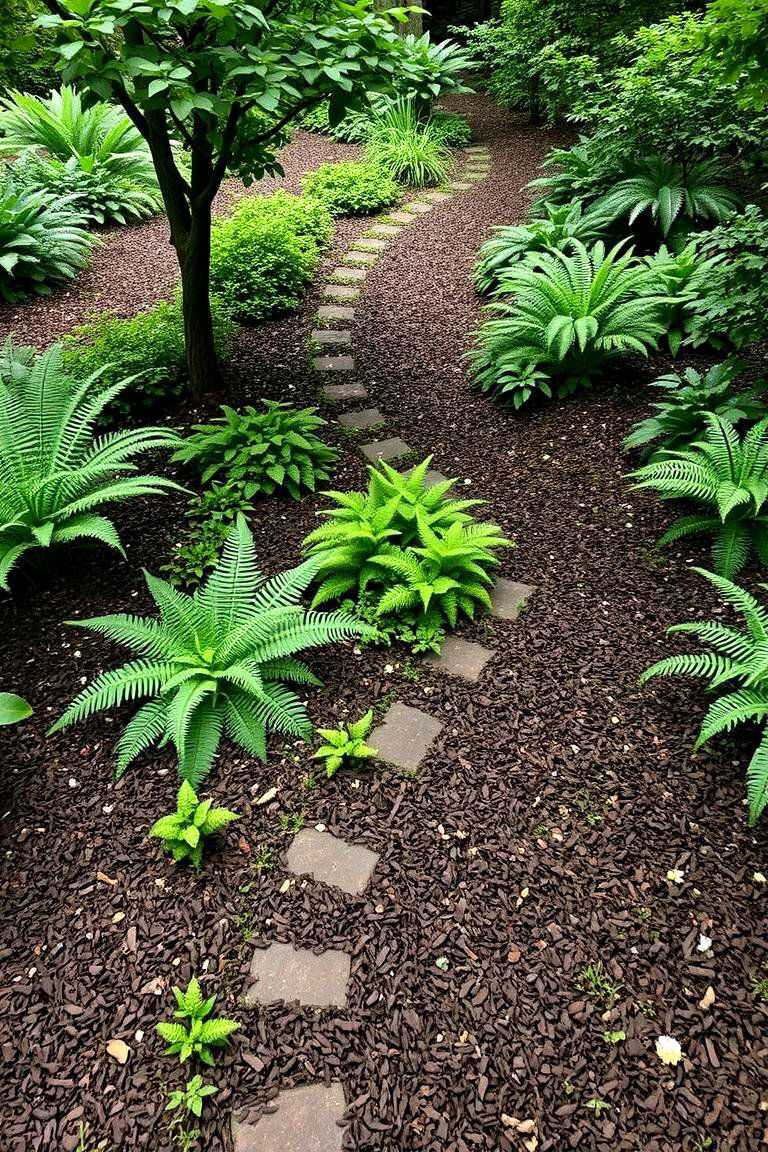
Creating pathways through your shade garden using mulch is a practical and aesthetically pleasing design choice. Mulch helps to suppress weeds, retain moisture in the soil, and provides a soft and natural walking surface. Choose from various types of mulch, such as wood chips, shredded bark, or pine needles, to complement the overall style of your garden. Well-defined mulch pathways also help to guide visitors through the different areas of the garden and highlight specific planting arrangements. The key benefit is the creation of functional and visually appealing pathways that enhance the accessibility and beauty of the shade garden.
15. Stone Lantern Accents in Greenery
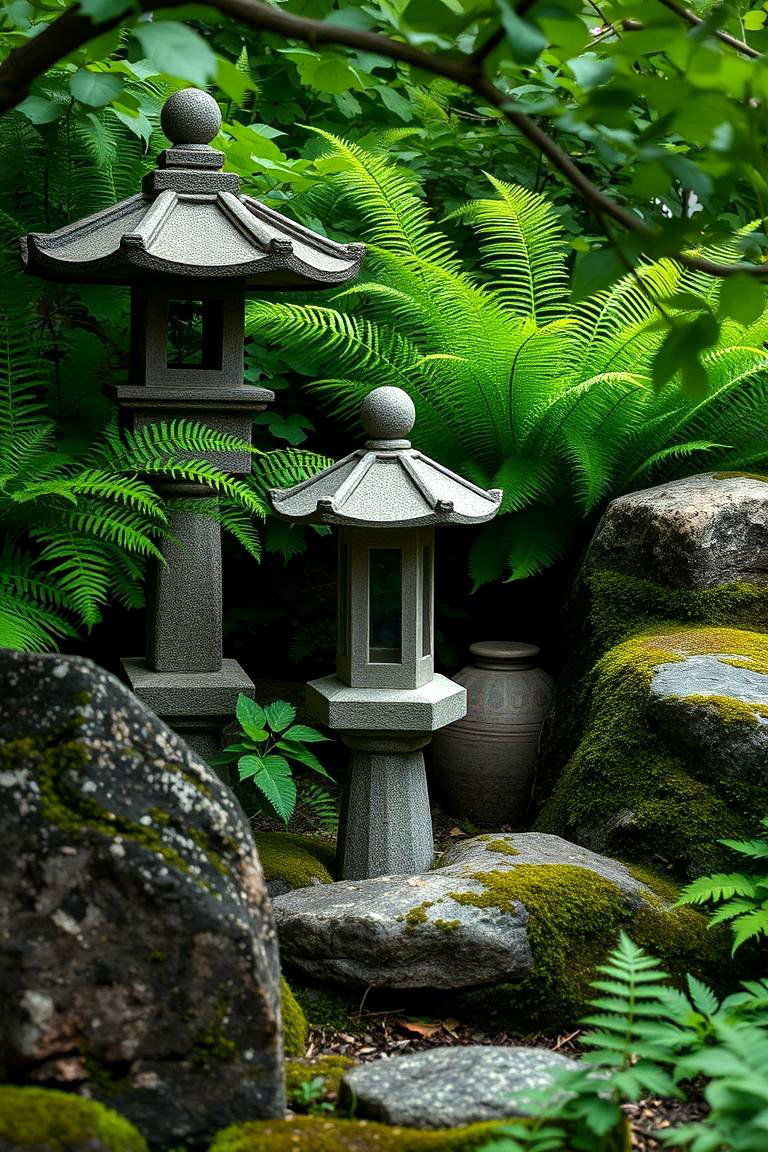
Adding stone lantern accents to your shade garden can introduce a touch of elegance and tranquility, particularly if you're aiming for an Asian-inspired design. The soft glow of a lantern at dusk can create a magical and serene ambiance. Place lanterns strategically amongst the greenery, perhaps near a pathway or as a focal point in a planting bed. The contrast between the rough texture of the stone and the delicate foliage of shade-loving plants like ferns and mosses can be particularly striking. The primary benefit is the infusion of subtle lighting and artistic elements that enhance the garden's atmosphere, especially in the evening.
16. Hanging Baskets with Shade-Tolerant Flowers
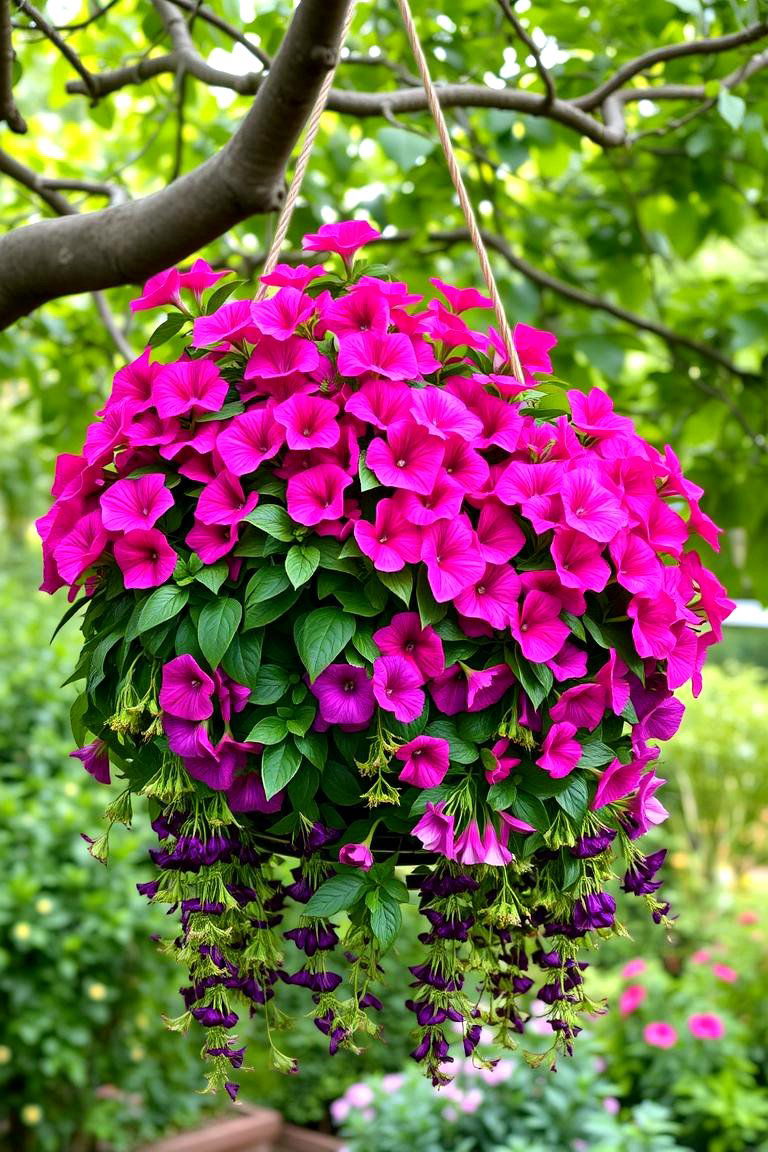
Don't forget to utilize vertical space with hanging baskets filled with shade-tolerant flowers. This is a fantastic way to add pops of color at eye level and create a more dynamic and layered garden design. Consider using plants like impatiens, fuchsias, begonias, and trailing lobelia, which thrive in partial to full shade and cascade beautifully from hanging baskets. You can hang them from tree branches, pergolas, or even sturdy hooks on walls or fences. The key benefit is the introduction of vibrant floral displays at different heights, adding visual interest and maximizing the use of available space.
17. Rock Garden with Shade-Loving Alpines
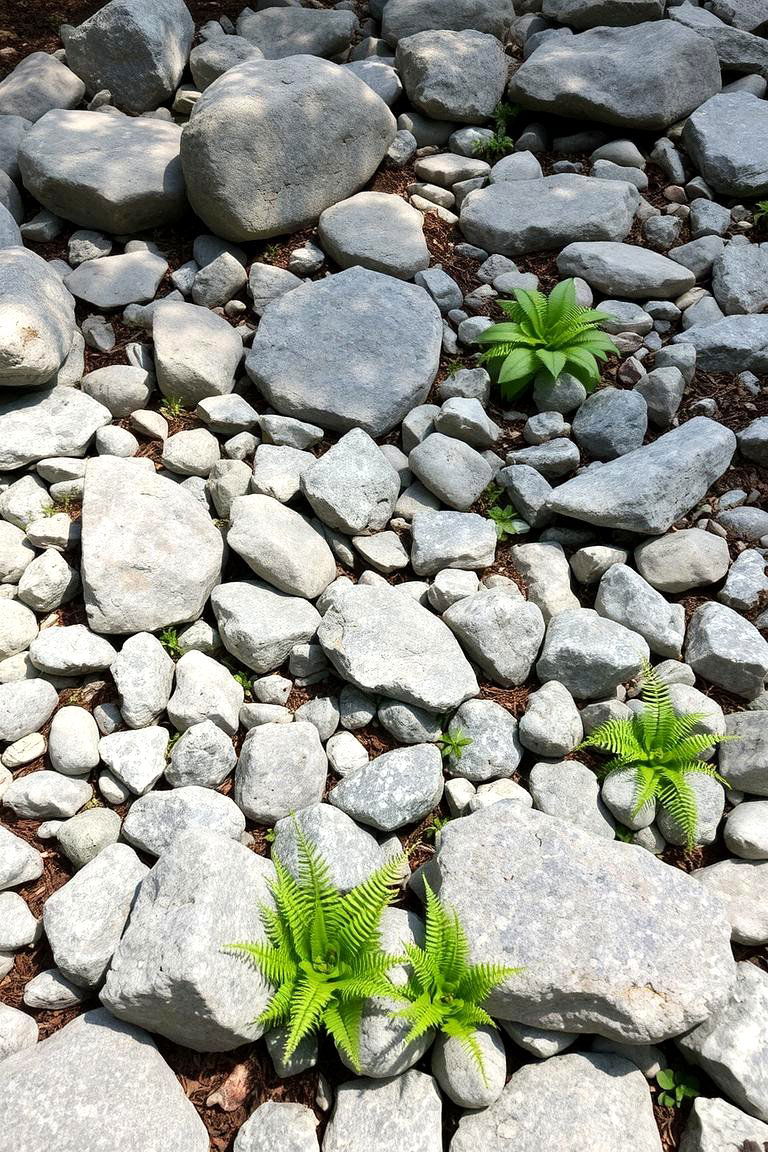
For a unique and textured look in a shady area, consider creating a rock garden featuring shade-loving alpine plants. These plants are adapted to cooler, shadier conditions and often have interesting foliage and delicate flowers. Incorporate various sizes of rocks and stones to create a naturalistic and rugged landscape. Suitable plants include some varieties of sedum, saxifrage, and certain ferns that prefer shade. The benefit here is the creation of a low-maintenance garden with distinct textures and forms that thrives in less sunny spots.
18. Miniature Shade Garden in a Terrarium
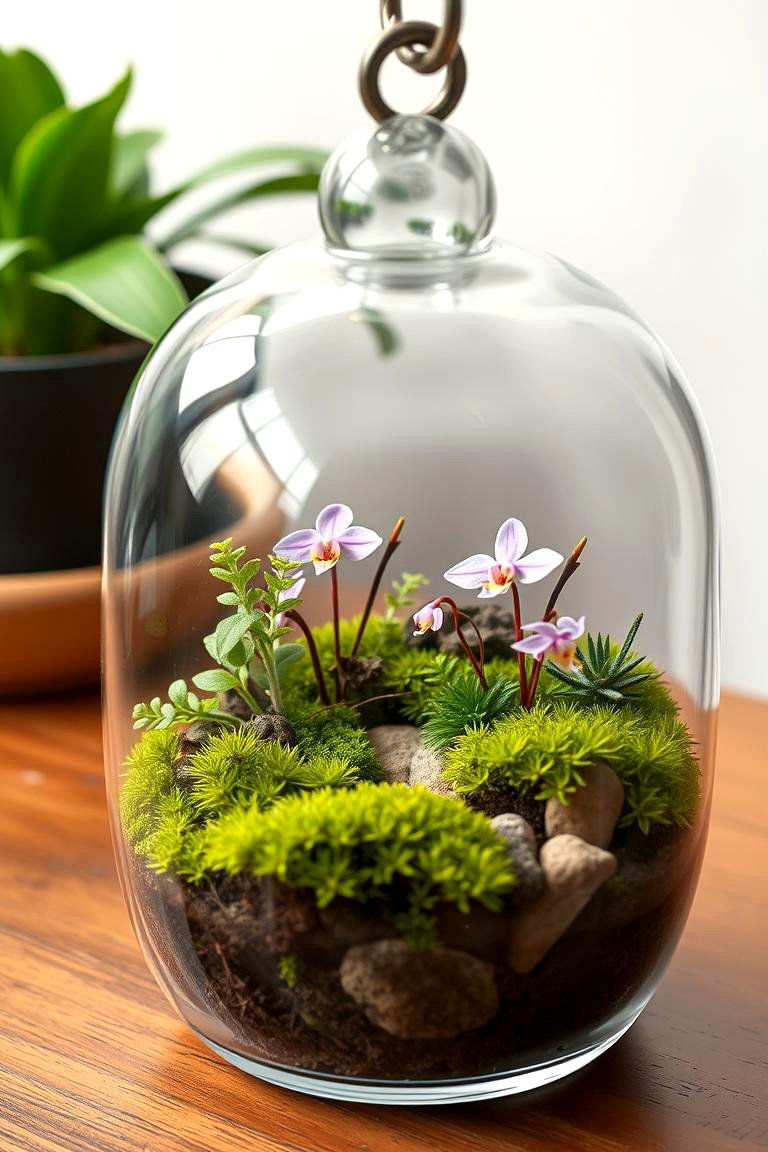
Bring the beauty of a shade garden indoors with a miniature version in a terrarium. This is a perfect option for those with limited outdoor space or for adding a touch of greenery to a shaded indoor area. Choose small, shade-loving plants like mosses, miniature ferns, and tiny orchids. Layer different types of soil and add small decorative elements like pebbles and figurines to create a charming miniature landscape. The key benefit is the ability to enjoy the tranquility of a shade garden in a compact and easily manageable form, bringing nature indoors.
19. Outdoor Dining Area in a Shady Spot
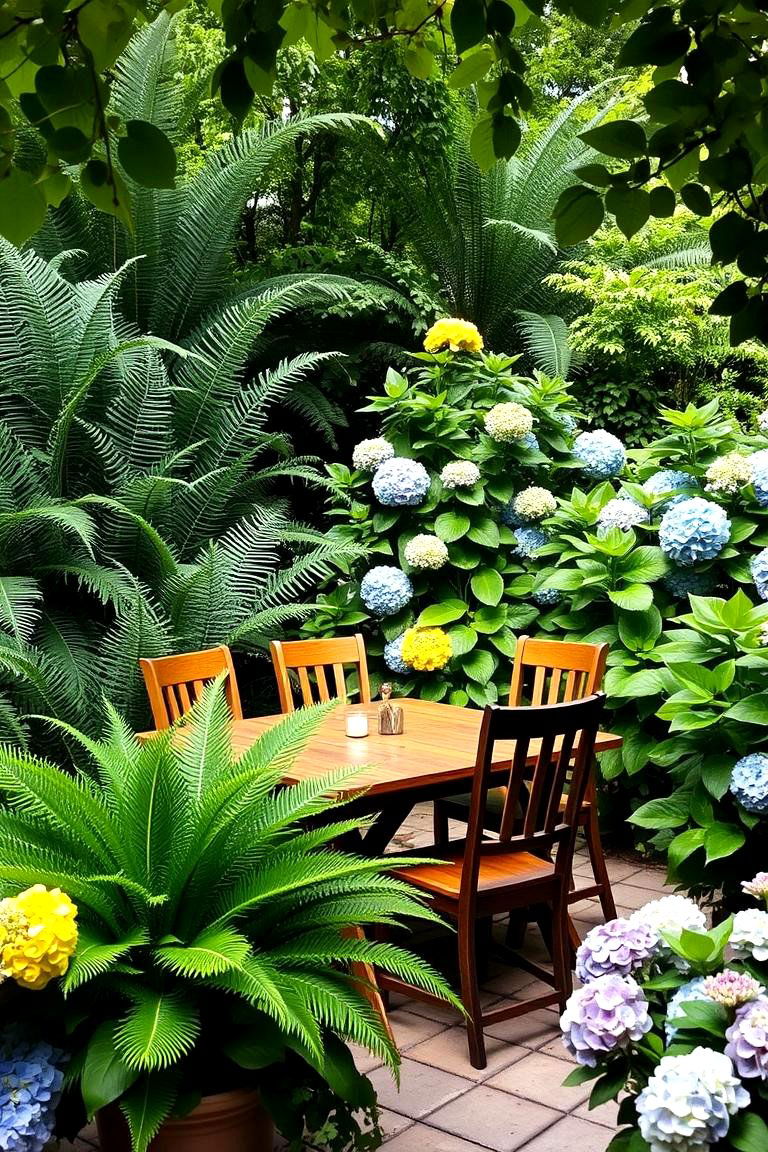
Transform a cool, shady area of your yard into a delightful outdoor dining space. The shade provides a welcome respite from the sun, making it an ideal spot for enjoying meals outdoors, especially during warmer months. Furnish the area with a comfortable table and chairs, and surround it with lush, shade-loving plants like hostas, ferns, and hydrangeas to create a private and inviting ambiance. Adding soft lighting, such as string lights or lanterns, can extend the usability of the space into the evening. The primary benefit is the creation of a functional and enjoyable outdoor living area where you can dine and relax in comfort.
20. Shade-Tolerant Herbs for a Culinary Corner
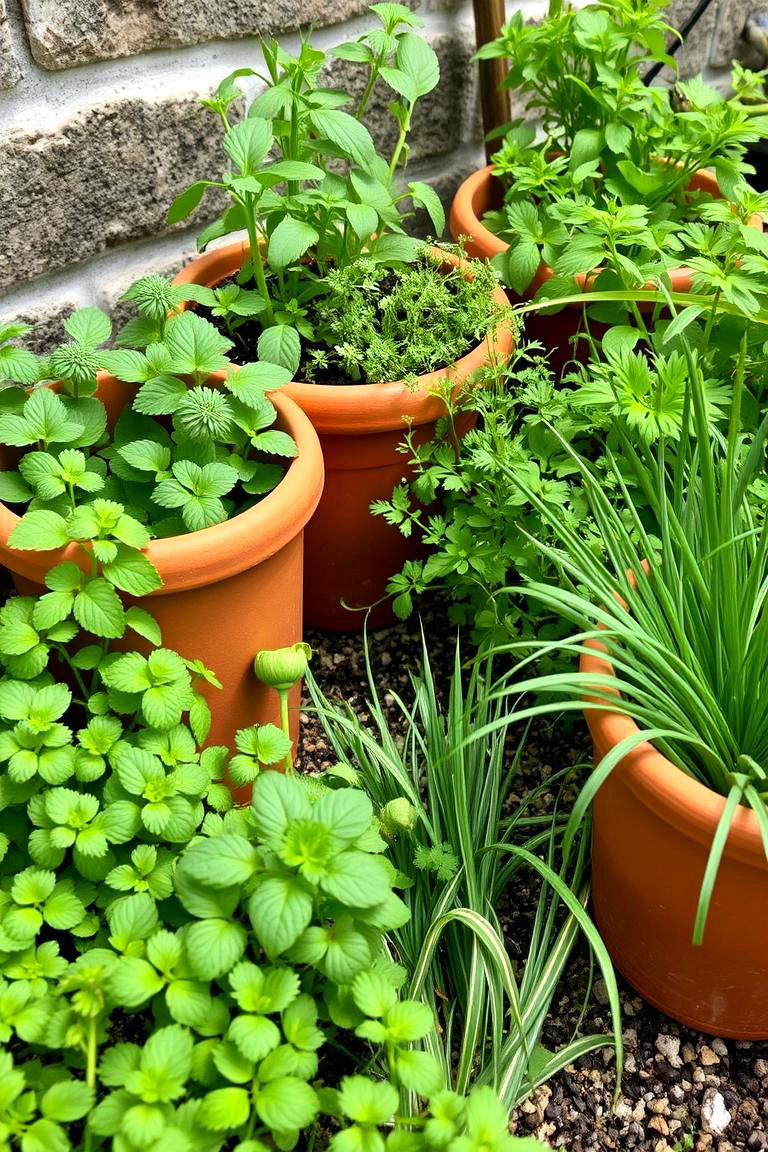
Even in the shade, you can cultivate a variety of useful and fragrant herbs. Many herbs, such as mint, parsley, chives, and cilantro, thrive in partial shade. Designate a corner of your shade garden for a culinary herb collection, either in the ground or in containers. Having fresh herbs readily available can enhance your cooking and add a sensory element to your garden. The benefit here is the combination of beauty and practicality, allowing you to grow your own fresh ingredients even in less sunny areas.
21. Moss Garden for a Tranquil Ambiance
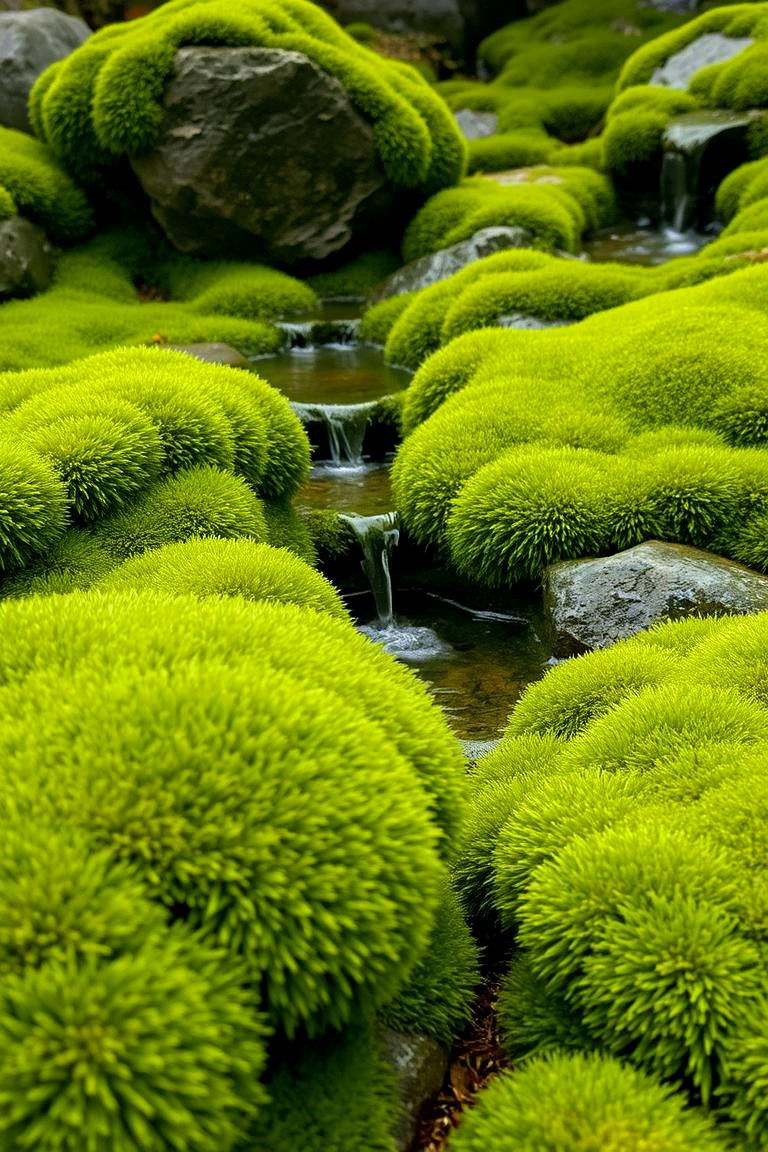
For a truly unique and serene shade garden, consider creating a moss garden. Mosses thrive in damp, shady conditions and offer a velvety carpet of green with fascinating textures. Incorporate rocks, logs, and perhaps a small water feature to enhance the tranquil atmosphere. Different varieties of moss can create interesting patterns and visual depth. While moss gardens require consistent moisture, they offer a low-maintenance and incredibly peaceful retreat. The key benefit is the creation of a calming and visually captivating space that celebrates the subtle beauty of these often-overlooked plants.
22. Painted Rocks as Garden Markers
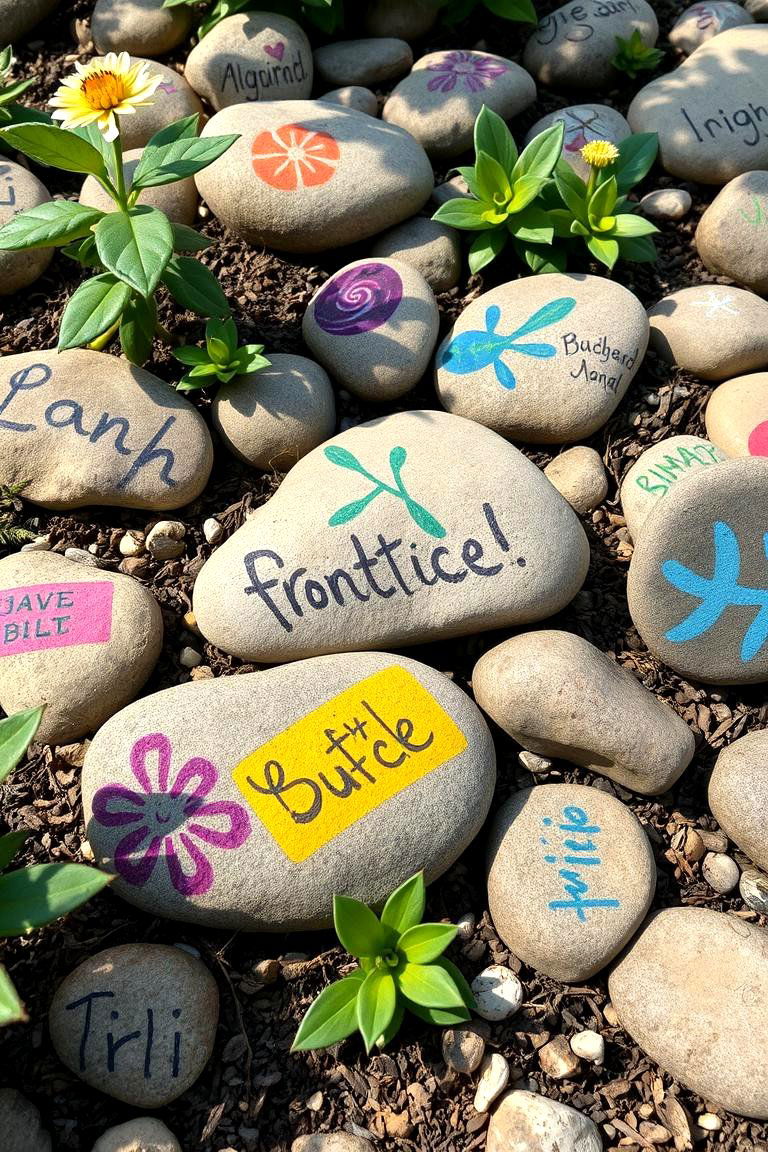
Add a touch of creativity and personality to your shade garden with painted rocks used as plant markers or decorative accents. This is a fun and easy DIY project that can involve the whole family. Use smooth rocks and weatherproof paints to label your plants or create colorful designs and patterns. Place them strategically throughout your shade garden to add a whimsical and personalized touch. The benefit here is the introduction of unique and handmade elements that enhance the charm and individuality of your garden.
23. Upcycled Decor in a Shade Garden
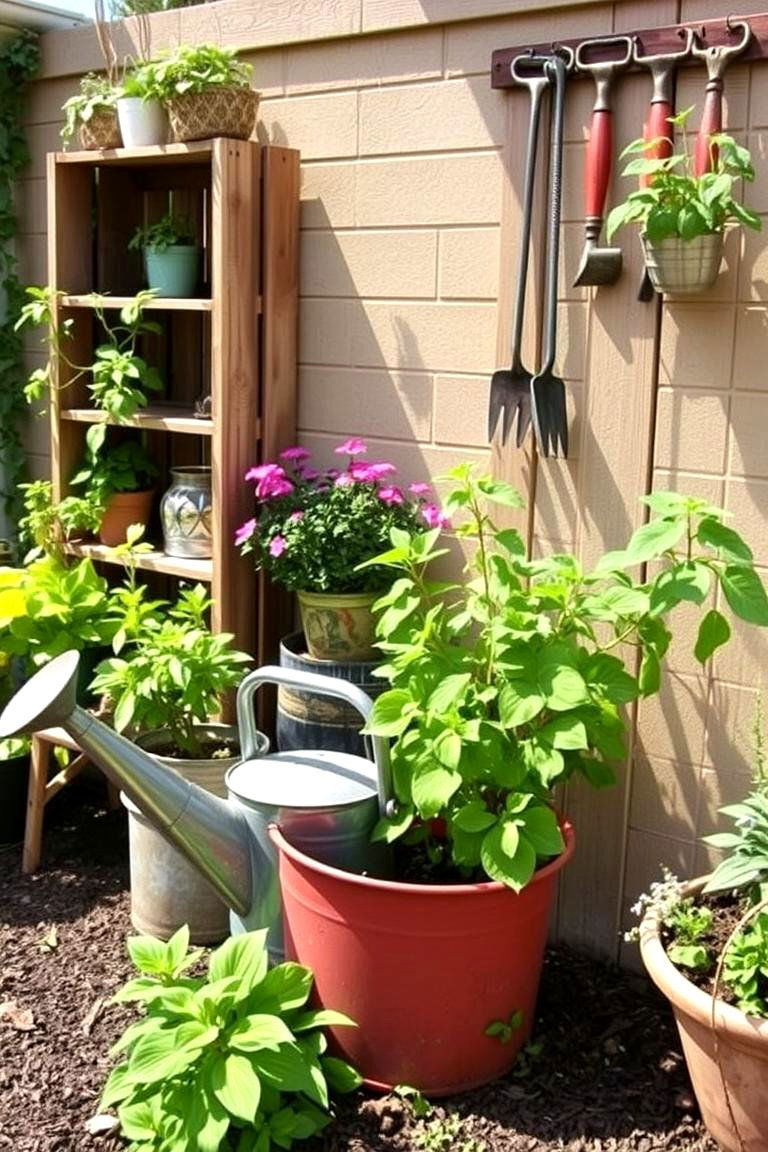
Give your shade garden a unique and eco-friendly touch by incorporating upcycled decor. Old watering cans, repurposed furniture, vintage tools, or even creatively arranged pieces of driftwood can add character and charm to the space. The shady environment often lends itself well to a slightly more rustic or eclectic aesthetic. By using items you already have or finding interesting pieces at flea markets or thrift stores, you can create a one-of-a-kind garden that reflects your personal style. The key benefit is the creation of a distinctive and sustainable garden design that showcases your creativity.
24. Shade Garden with a Swing
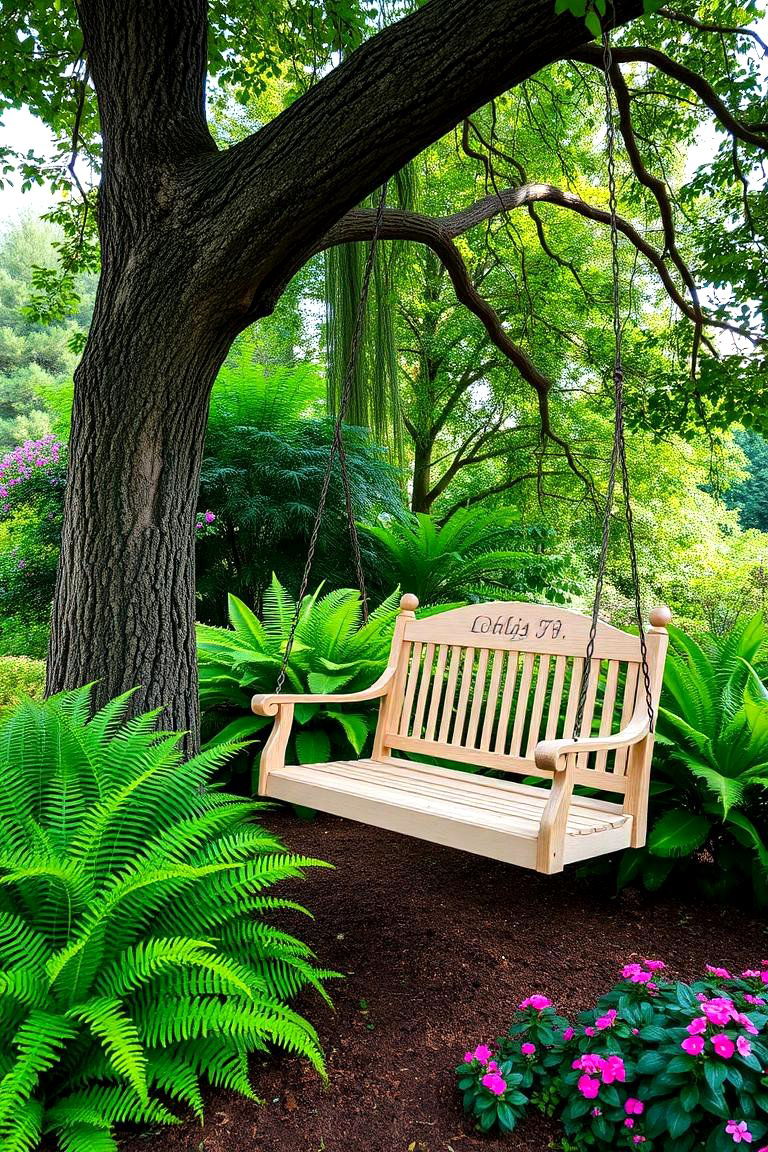
Imagine gently swaying in a comfortable swing, surrounded by the cool tranquility of your shade garden. Adding a swing, whether it's a classic porch swing, a hammock, or a simple rope swing hanging from a sturdy tree branch, can create a wonderful focal point and a relaxing spot to enjoy the beauty of your surroundings. Underplant the area with shade-loving flowers and foliage to enhance the sense of enclosure and serenity. The primary benefit is the creation of a delightful and inviting space for relaxation and enjoying the peaceful ambiance of the shade garden.
Conclusion:
From the tranquil allure of hostas and ferns to the whimsical charm of fairy gardens, these 24 Shade Garden Design Ideas illustrate the remarkable potential of areas with limited sunlight. Embracing the unique conditions of shade allows for the cultivation of a diverse palette of textures, colors, and forms, transforming often-neglected spaces into verdant retreats. Whether you opt for a serene woodland path, a vibrant vertical display, or a cozy reading nook, the key is to select plants that thrive in lower light and to design with the natural contours and ambiance of the shaded area in mind. By thoughtfully incorporating these ideas, you can create a captivating and enjoyable garden that celebrates the beauty of the shade.


